













































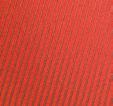







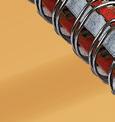






















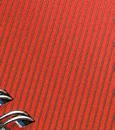

























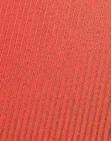



























































































































































































































































































































































































































All CVMA CE offerings are live and interactive, and count toward your required participatory instruction. Pre-recorded online CE only counts toward self-study even if it offers the ability to ask questions afterwards. For more information on CE requirements, visit the Learning tab at cvma.net.
CVMA Spring Seminar – From Valley to Virtual Live Interactive Online CE for Veterinarians • Up to 12 CEUs

March 5–7, 2021
The online CVMA Spring Seminar offers up to 12 CEUs and includes sessions on dentistry and internal medicine. See page 10 for more information.

Sponsored by
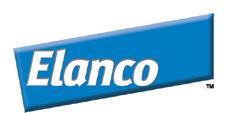
PacVet Live
A Sea of Virtual CE • Up to 32 CEUs
June 18, 19, 26 & 27, 2021
Catch a wave of interactive online CE at PacVet Live! For full information, visit PacVet.net. See page 24 for more information.
Earn CE with CVMA Online Seminars

Below are our upcoming online seminar topics. Please refer to page 12 for details.
New Employment Laws for 2021 • 1.5 CEUs
January 26, 2021
Sexual Harassment Prevention, Education, and Training • 1 CEU for non-supervisors and 2 CEUs for supervisors. February 10 and February 16, 2021.
Registration for all CVMA events can be made online by logging onto cvma.net or by calling 800.655.2862. For the timeliest CE information, visit Learning at cvma.net.
The Publication of the California Veterinary Medical Association
Publisher Dan Baxter
Managing Editor Kristen Calderon
Editor Trish Consunji
Publication Designer Howard Steffens
Classified Advertising Laura Phillips
Board of Governors President
Dr. Dirk Yelinek
President Elect Dr. Elisabeth Klapstein
Member-at-Large Dr. Keith Rode
Members
Dr. Peter Bowie
Dr. Patrick Connolly
Dr. Larry Correia
Dr. Jennifer Hawkins
Dr. Michael Karle
Dr. Adam Lauppe
Dr. Julia Lewis
Dr. Bruce Lindsey
Dr. Teresa Morishita
Dr. Marshall Scott
Dr. Dianne Sequoia
Dr. Peter Vogel
Student Representatives
University of California, Davis Megan Dietz
Western University
Christopher Morrill
Treasurer Dr. George Bishop
Chair, House of Delegates Dr. Brent Wooden
CVMA Staff
Executive Director Dan Baxter
Assistant Executive Director Della Yee
Director of Communications Kristen Calderon
Director of Finance Kathy Van Booven
Director of Regulatory Affairs Dr. Grant Miller
Design and Marketing Manager Howard Steffens
Membership and Student Services Laura Phillips
Manager
Publications Manager Trish Consunji
Accountant Bernice Evans
Executive Assistant Georgia Ashley
Communications Coordinator Nicole Campos
Finance Coordinator Sharmele Browne
Meetings and Events Coordinator Lily Briggs
Membership and CE Coordinator Jennifer Smith Receptionist Mary Young
Display Advertising
Please contact the CVMA at 916.649.0599 or email staff@cvma.net.
Tell us what you think!
California Veterinarian (ISSN 00081612) is published bi-monthly by the California Veterinary Medical Association, e-mail: staff@cvma.net. California Veterinarian is an official publication of the California Veterinary Medical Association. Annual subscription rates to non-members: $50 U.S., $60 Canada/Mexico, $70 overseas. Price per single copy: $10 current year, $12 back issues. Periodicals postage paid at Sacramento, CA and at additional mailing offices. POSTMASTER: Send address changes to California Veterinarian, 1400 River Park Dr., Suite 100, Sacramento, CA 95815-4505. Phone: 800.655.2862
The CVMA and California Veterinarian assume no responsibility for material contained in articles and advertisements published, nor does publication necessarily constitute endorsement by them. ©2021 CVMA
Want to comment on what the CVMA is doing or writing about? Send an email to comments@cvma.net or call 800.655.2862. Your thoughts and opinions matter to us. The CVMA is YOUR association! The CVMA is 7,800 voices strong. Let us hear your voice!
Life in the midst of “Pandemia” has forced individuals and organizations to make massive changes to their modus operandi. The way we work; the way we socialize; the way we shop; just about everything has been massively altered by COVID-19. Association life is no exception.

















Like other professional associations, one of the CVMA’s reasons for being is to provide educational and networking opportunities to our members. Through offerings such as our Spring and Fall Seminars, and most notably the Pacific Veterinary Conference (PacVet), the CVMA takes that charge very seriously. Indeed, a good part of the work we do here at “the home office” during the course of the year is dedicated to planning, organizing, and executing these events, as well as other meetings and continuing education programs. While putting these events together is no mean feat, over the years we have developed well-oiled procedures that allow us to plan and implement our various gatherings with the confidence of knowing that we have done it before, and often.
2020 was different. When California’s COVID lockdown went into effect in the spring, we had approximately six weeks to turn PacVet from an in-person affair to a virtual one—PacVet Live! The CVMA’s staff did amazing work effectuating this gigantic pivot, and while we were not able to offer the same magnitude of CE programs as otherwise would have been the case, we were able to put on a virtual conference that was well attended and positively reviewed. As restrictions continued throughout the year, the decision to hold our October Fall Seminar virtually was an easy and necessary one. With the benefit of more advanced notice concerning the virtual nature of the event, the CVMA’s staff hit their marks perfectly. I was truly impressed by their work both in front of the Zoom camera and behind the scenes. Like PacVet Live, the Fall Seminar To-Go was a success.
As 2021 begins, different associations have different plans for their conferences. As a member of the American Society of Association Executives, I am able to monitor what other associations across the country and in a variety of industries are doing. Not surprisingly, many associations are grappling with how to hold their conferences. Conquer COVID fatigue and go-in person? Stay conservative and take it virtual? Split the baby and make it a hybrid? The results are across the board, with each association making the choice it feels appropriate for itself and its members.
Here at the CVMA, after no small amount of consideration, we decided that both our 2021 Spring Seminar (March 5–7) and PacVet 2021 (June 18–19 and 26–27) will be totally virtual affairs, transforming into From Valley to Virtual for the Spring Seminar and PacVet Live 2021. While we are disappointed that we will not be personally gathering in Yosemite and Long Beach, respectively, we felt strongly that making an early, “virtual-only” declaration was not only the most responsible choice, but also allowed our staff to focus all of their efforts on putting on the best, most fulsome, most interactive programs possible. Further, neither we nor you will have to twist in the breeze, wondering whether an in-person event might eventually need to be modified or scrapped altogether as a result of changing health directives. In short, we are taking control of our own destiny and firmly believe we have made the right choice.
Although the much-welcomed arrival of the COVID-19 vaccine has us feeling hopeful for an in-person meeting for the 2021 Fall Seminar, we must still take a “wait and see” approach. It is our goal to inform our membership of the fate of the Fall Seminar as soon as we reasonably can.


















We are doing what we can to project and navigate as best as possible. It’s not easy, but it’s a responsibility we take very seriously. We appreciate your patience, your understanding, and your continuing support!
Happy New Year…let’s all have a great 2021!
Dan Baxter, Executive Director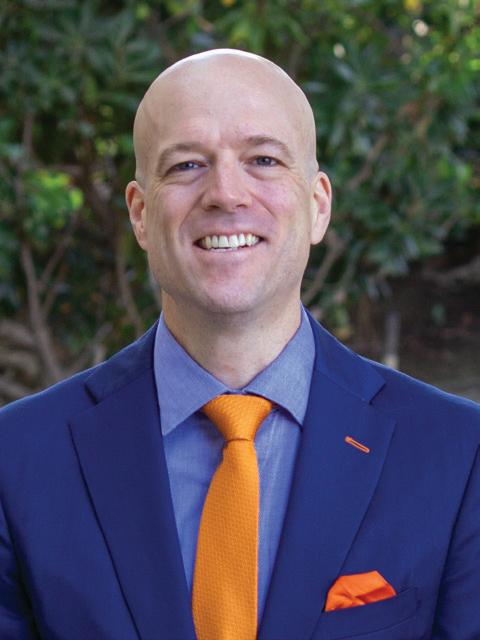
Iwas warned that the medicine is not actually the hardest part of being a new graduate. A dear and wise colleague told me that, but I could not fathom it to be true. Don’t get me wrong, the medicine is not always easy. Veterinary medicine is just an endless rabbit hole of information. However, we spend four years being taught how to learn and how to address problems. We spent considerably less time discussing the necessary people skills that come with this profession.
Clients will never cease to amaze you in both positive and negative aspects. There are the clients that want to be veterinarians and they come in a couple of flavors. The first type is the hands-on one. For example, they may feel qualified to diagnose and treat their own animals. They will watch you very intently to try and figure out what they can do without you next time. Worse yet, they will only come to you when something has gone disastrously wrong. The second type is more cerebral in nature. They will ask you endless questions about all possible topics. They will frequently cite the internet and their friends as tried and true resources. I appreciate that this type of client is eager to learn and genuinely wants to help their animals. However, I find it difficult to delicately encourage them to utilize trained professionals. I recognize this as a definite area of growth for me.
The clients that surprise me the most are the ones who know absolutely nothing about basic animal husbandry. I took it for granted that people would research how to properly feed, house, and handle their animals. I spend a shocking amount of time discussing these basic, yet critical parts of their animals’ lives. At first, I found this work to be very frustrating. However, I have ultimately discovered that while most of these clients are uninformed, they are very teachable. I have honed a husbandry basics talk for them and utilize species-specific information sheets. It can actually be incredibly rewarding to see clients follow through on your recommendations, and by extension, the animals’ wellbeing improves.
Then you have your clients who truly make it all worthwhile. Some of my favorite clients are the ones who may not have much but will do absolutely everything in their power for their animals. I always appreciate the clients who actually treat me like a human and are willing to joke around or just simply say thank you for working
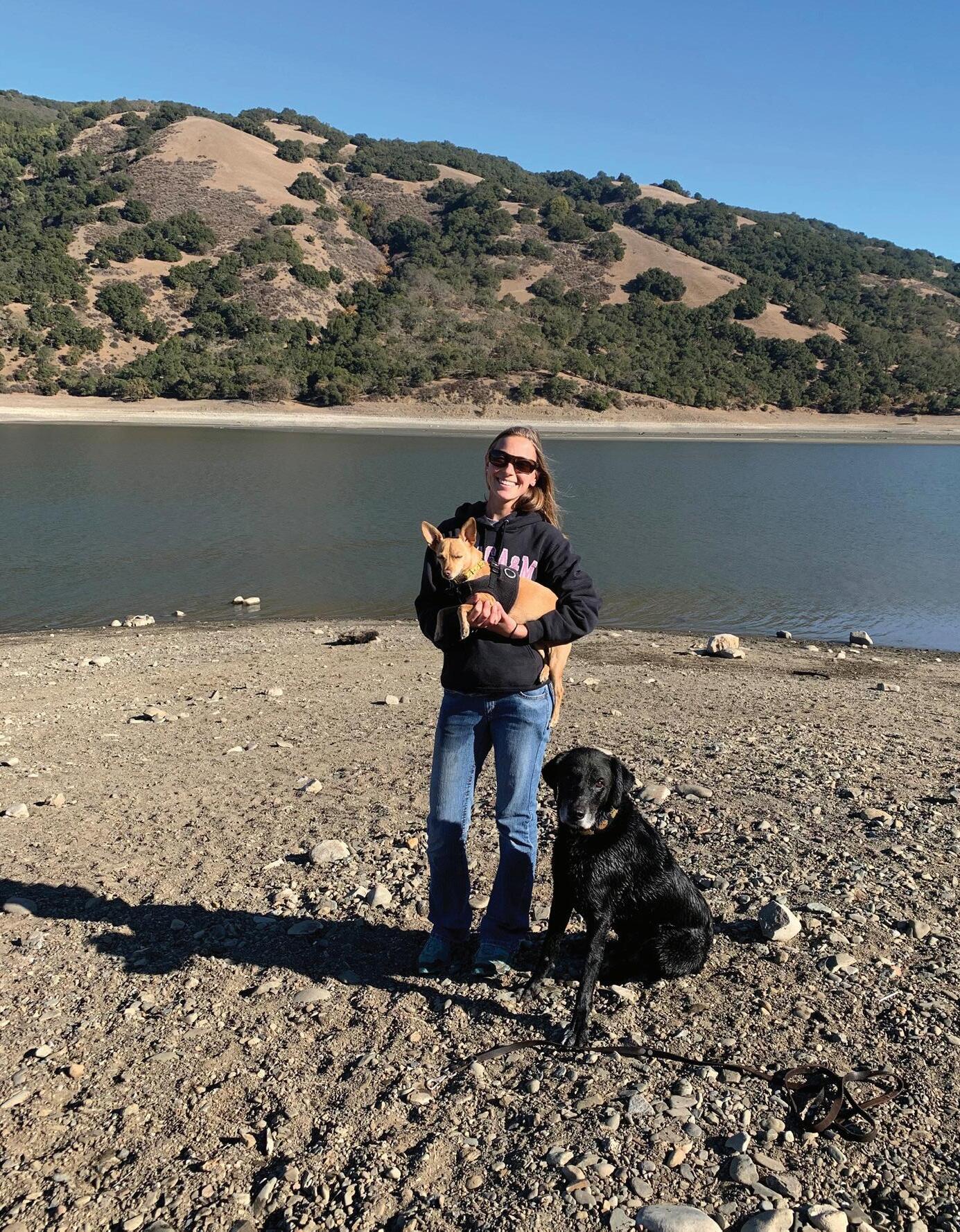
late when I am calling them to check in at 8 PM. As a new graduate, I am still strongly swayed by the idea of free food. Thankfully, a good handful of clients like to show their appreciation by sending me various baked goods.
At the end of the day, all of the animals we treat do in fact come with people. In order to do the best job helping these animals, we need to refine our ability to effectively communicate with their caretakers and help them understand the importance of following our advice.
Cal/OSHA Form 300A Posting Requirement
Cal/OSHA Form 300A is a summary of specified job-related illnesses and injuries that have been reported by businesses in 2020. Businesses must post this form between February 1 and April 30, 2021. Visit dir.ca.gov/dosh/ DoshReg/ApndxB300AFinal.pdf to access the form.
Current COVID-19 News Available

For the most up-to-date COVID-19 news relating to the veterinary profession, visit cvma.net.
Register Today for PacVet Live!
Our popular Pacific Veterinary Conference (aka PacVet) is once again offering virtual CE packed with live and interactive sessions that count toward your required participatory instruction. See page 24 for more information.
Advertise in California Veterinarian Magazine
With a readership of over 10,000, California Veterinarian magazine is distributed to all CVMA members and all non-member licensed veterinary practitioners in California, as well as interested parties throughout the US and abroad. For more information and to download our media kit, visit cvma.net > Publications > California Veterinarian Magazine > California Veterinarian Display Advertising.
CVMA Online Seminars are a convenient way to get your CE where you want it and when you want it. Most interactive webinars are off ered on two diff erent dates and times to fi t your busy schedule and can be viewed wherever you have a high-speed internet connection.
Register for these online seminars by visiting the Learning tab at cvma.net.
Baxter, CVMA Executive Director Grant Miller, DVM, CVMA Director of Regulatory A airs
January 26, 2021 12:30 PM–1:45 PM (1.5 CEUs)
With several new employment laws taking effect in 2021, many businesses, including veterinary practices, will be impacted. This talk will cover several new and important laws that all employers and employees should be aware of moving forward. This talk is free to CVMA members and non-members and qualifies as continuing education credit for the purpose of California veterinarian and registered veterinary technician license renewal.
The following will be discussed during this webinar:
• Employer requirements due to COVID-19
• COVID state tax relief
• Changes to California sick leave, medical leave, and kin care

• Changes to workers’ compensation law
• And more
This course qualifies for 1.5 hours of interactive learning. It is complimentary for CVMA members and non-members.
Employers with five or more employees must provide sexual harassment and abusive conduct prevention training for all employees by January 1, 2021, and every two years thereafter. New supervisory employees must still be trained within six months of assuming their supervisory position and new non-supervisory employees must be trained within six months of hire. Additionally, temporary, seasonal, and other employees hired to work less than six months require this training within 30 calendar days after the hire date or within 100 hours worked, whichever comes first.
This webinar will meet the requirement for one hour of training for non-supervisor employees and two hours of training for supervisors.
For more information and to register for these online seminars, visit the Learning tab at cvma.net or call 800.655.2862.

 Sarah Gray, DVM, DACVECC
Sarah Gray, DVM, DACVECC

• Owner of Horizon Veterinary Specialists in Ventura










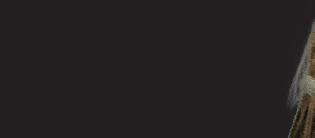





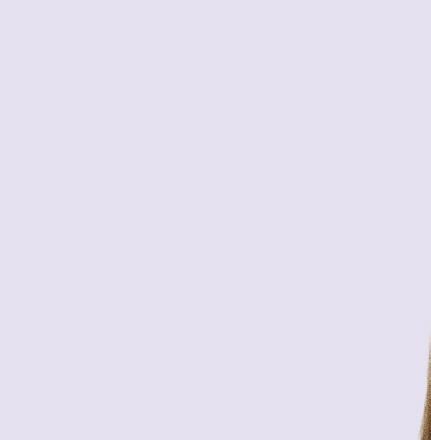
• Practice type: Emergency and specialty private practice



• Iowa State University
I try to make the world a better place by taking it a day at a time in my daily life and a case at a time at work. Each animal means the world to their family and I hope that I can make a di erence for them or get them on the road to answer their pet’s emergency.
I am a CVMA member because I want to be a part of organized veterinary medicine and be informed of what is happening in my state.
Family?
I live with a pit bull, Chihuahua, and three cats!
Members are the heart of the CVMA
What is your best advice for practicing during COVID-19?
Take a break, even if it is just an afternoon to hike, run, or read. Getting a break from veterinary medicine is so important to resetting in these stressful times!
What is something you do that your clients love?
As an ER clinician, I’m not sure my clients love to see me and it can be a stressful time (especially now in a pandemic) but I hope that I make the ER visit a little less stressful for them by explaining what I’ve found and why we want to do testing and treatments in each case. Where is the most interesting place you have lived or visited?
I have lived in a fair number of places in the US (Minnesota, Iowa, Pennsylvania, Mississippi, and of course my favorite, California!). I also lived in Switzerland and England growing up. California is truly the most interesting, o ering so many di ering landscapes, great cities, and people!
Professional goals?

We are a new clinic that is still growing and I hope to grow our emergency department and keep learning how best to take care of our clients and patients.
run,







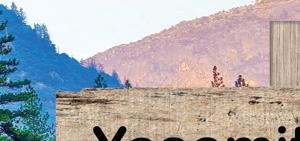
In response to COVID-19 restrictions, our usual in-person seminar in Yosemite has been transformed into the Spring Seminar – From Valley to Virtual taking place online from March 5–7. Veterinarians will enjoy engaging CE, exciting ra es and fun Yosemite themed activities.










Register by February 24th to save!
Dr. Mark Smith
Dr. Smith received his veterinary degree from the University of Pennsylvania in 1982. He is a diplomate of the American College of Veterinary Surgeons (ACVS) and the American Veterinary Dental College (AVDC). Dr. Smith is the recipient of numerous teaching and service awards. He is co-author of Atlas ofApproaches for General Surgery of the Dog and Cat, and editor emeritus of the Journal of Veterinary Dentistry. Dr. Smith is a founding fellow of ACVS and AVDC.
Dr. Jessica Pritchard
Dr. Pritchard is a clinical assistant professor in small animal internal medicine at the UW-Madison School of Veterinary Medicine. Her research interests include the pathogenesis of infectious and immune-mediated disease in dogs and cats, specifically Borrelia spp. and blastomycosis.
Elanco is proud to announce that we’re sponsoring the upcoming California Veterinary Medical Association (CVMA) Spring Seminar, which will be held online. We’ve lined up some engaging CE courses, and each session will be live and fully interactive. Plus, we’ll also have some exciting raffles and prizes. Don’t miss out!



For more information, visit CVMA.net
Friday, March 5: 9:00 AM–1:00 PM




























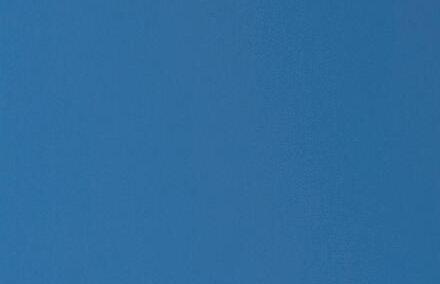
•Surgical Tooth Extraction: The Tough Carnassial and Canine Teeth
•Surgical Tooth Extraction: Deciduous and “Sneaky” Tough Teeth
•Tooth Extraction Complications: Avoid and Conquer



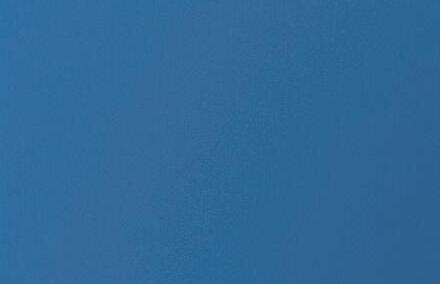
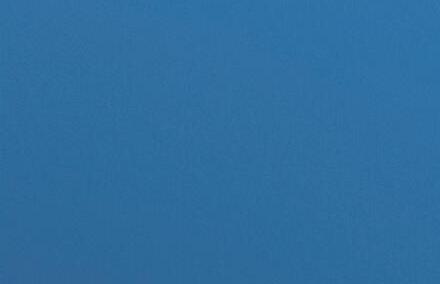
•Oronasal Fistula: Holes That Must Be Fixed
Saturday, March 6: 11:00 AM–1:00 PM

•Canine and Feline Diabetic Monitoring Strategies

•Troubleshooting the Difficult Diabetic
Saturday, March 6: 9:00 AM–11:00 AM
•Tooth Resorption in Cats: Don’t Think You Know; Know You Know!
•Oral Neoplasia: Operating Tumors You Can Handle!
Sunday, March 7: 9:00 AM–1:00 PM
•Bad Blood: Canine Regenerative Immune-Mediated Anemias
•ITP for You and Me: A Rational Approach to the Thrombocytopenic Patient
•Skeletons in Our Closets: Understanding and Reducing Error in Medical Decision Making
•Palliative Care for the SAIM Patient
neezing, water, food debris at the nares, purulent nasal discharge…signs of chronic rhinitis secondary to oronasal fistula (Fig. 1). Enough already! Time to bite the bullet and recommend surgery. The rhinitis may respond to antibiotic treatment but clinical signs will return. Communication between the oral and nasal cavities is a problem that requires surgery for repair. The etiology of oronasal fistula is usually secondary to extraction or loss of the maxillary canine tooth. How could this happen? Oronasal communication at a maxillary canine tooth may be preexisting if the tooth has severe periodontal disease (Fig. 2). Failure to make this diagnosis and perform a non-surgical extraction leaving the extraction site open is associated with a high incidence of continued oronasal communication. Oronasal fistula can be iatrogenic based on fracture of the bone at the medial apical aspect of the tooth during the extraction procedure (Fig. 3). This complication is diagnosed by noting hemorrhage exiting from the ipsilateral nares.
Acute oronasal fistula at the time of canine tooth extraction should be addressed by making a buccal mucoperiosteal as indicated for a surgical tooth extraction (Fig. 4). A tension-free, primary wound closure would be expected to be successful. For chronic oronasal fistula, the associated tissue deficit cannot be overcome by freshening the wound




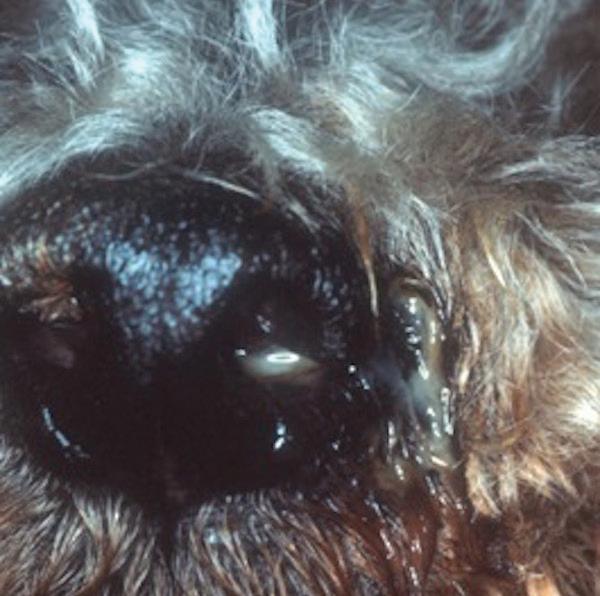
“Sneezing, water, food debris at the nares, purulent nasal discharge… signs of chronic rhinitis secondary to oronasal fi stula.”2021 CVMA Spring Seminar Speaker
edges and placing tension sutures to close the defect. In fact, a sure premonition of technique failure is excessive tension at the surgery site. Therefore, the hallmark surgical principle for repair of oronasal fistula is elevation of mucosal flap(s) that are sutured over the defect without tension. A single or double flap technique can be used (Fig. 5). The double flap technique uses two sources of oral mucosa to provide a flap that provides an epithelial surface facing the nasal cavity and second flap to provide an epithelial surface facing the oral cavity. Generally, the double flap technique is reserved for failure of the single flap technique, which is unusual.
Single mucosal flap (A) used for oronasal fistula repair in a dog. Note the vertical release incisions (black lines) and the area that requires debridement (yellow ellipse). Note the scar tissue from previous surgical repair attempts. A tension-free flap is elevated (B) and sutured (C) to repair the fistula.
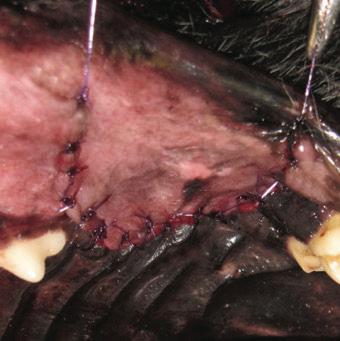
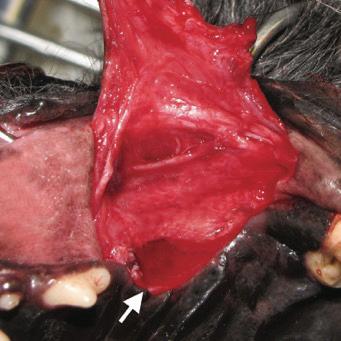
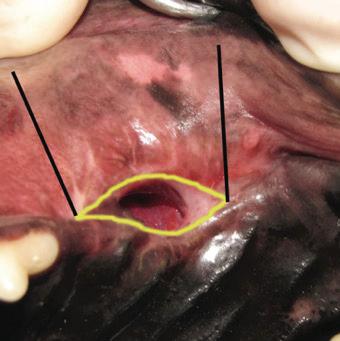
Similar surgical principles apply for oronasal communication secondary to malocclusion or as a complication of radiation therapy for maxillary neoplasms. In cases where the oronasal communication is refractory after multiple surgical repair techniques have failed, a silastic prosthetic device can be placed to obturate the fistula and alleviate clinical symptoms.
In summary, surgical methods are recommended to repair oronasal fistula regardless of the etiology. It is a surgical disease! Aggressive flap elevation, peripheral fistula wound debridement, and tension-free wound closure will optimize a successful outcome
Dr. Smith received his veterinary degree from the University of Pennsylvania in 1982. He is a diplomate of the American College of Veterinary Surgeons (ACVS) and American Veterinary Dental College (AVDC). Dr. Smith is the recipient of numerous teaching and service awards. He is co-author of Atlas of Approaches for General Surgery of the Dog and Cat, and editor emeritus of the Journal ofVeterinary Dentistry. Dr. Smith is a founding fellow of AVDC and ACVS in oral and maxillofacial surgery.

“Surgical methods are recommended to repair oronasal fistula regardless of the etiology. It is a surgical disease! ”
This profession can be tremendously rewarding but it can also be incredibly taxing, both mentally and physically. This series—Renew—explores wellness for veterinary professionals from a variety of angles...physical, mental, and emotional. We hope these articles provide both insight and inspiration for a lifetime of wellness and renewal.


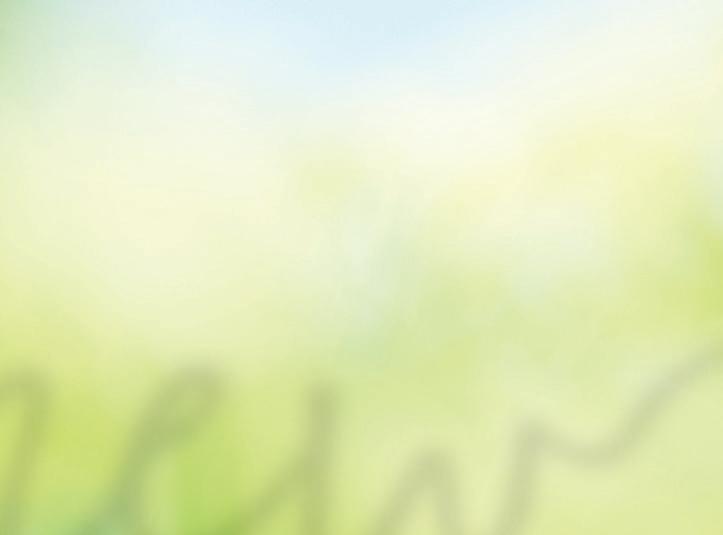


 by Tosha Zimmerman, CVT By
by Tosha Zimmerman, CVT By
This past year has been one of the most difficult many of us have had to face. On top of an ongoing pandemic, which in itself is enough, we have had to face natural disasters such as record-breaking wildfires and hurricanes as well as a continuing political crisis that has caused immeasurable division. Many of us have experienced the death of a loved one or beloved pet, extended separation from loved ones and friends, and an abundance of endless change that has kept us from feeling the slightest hint of normalcy again.
Our emotional wellbeing is already being tested on a daily basis and if you are like me, seasonal depression is an additional concern. I have endured years of anxiety and depression so the thought of sinking deeper into the quicksand has encouraged me to try to plan ahead and establish ways to get ahead of winter seasonal depression.
According to the Mayo Clinic’s website, seasonal affective disorder (SAD) is “a type of depression that's related to changes in seasons—SAD begins and ends at about the same times every year.” Some of the most common symptoms are sadness, fatigue, lack of motivation, loss of
interest in enjoyable things, insomnia, and withdrawal. My seasonal depression begins in the fall when I notice the sun starting to set earlier and it is in full force by the time we set our clocks back. This year it has been more difficult to manage my mental health due to many reasons besides the pandemic, but I am determined not to let the arrival of winter trigger a downward spiral of seasonal depression that usually cripples me annually.
There are many reputable sources such as the Mayo Clinic that provide recommendations to combat seasonal depression. Experimenting with some of the following tools should point anyone in the right direction to successfully combat the symptoms of SAD.
The tool that most people have heard of is light box therapy. Light boxes, which mimic outdoor light by emitting a broad-spectrum ultraviolet light, reduce the release of melatonin and are associated with increasing serotonin levels. The suggestion is to utilize a light box first thing in the morning for at least 30 minutes which should help you start the day with a more positive, happy attitude. Although you can purchase a light box without a prescription, you should
“Exploring your creative side by drawing, painting, or playing music are great ways to occupy your mind while learning something new.”
consult your physician for recommendations and the appropriate usage. I personally have not tried using a light box but I walk every morning after the sun has come up as well as work close to a window that provides natural light. These practices have helped me greatly with maintaining an optimistic mood throughout the day.
In addition to light therapy, exercise has also been proven to increase serotonin levels as well as improve mood. If you can combine sunshine and exercises such as walking and/or biking, even better! Exercise such as strength training and yoga relieve stress and anxiety which can reduce symptoms of depression and promote the sensation of feeling good about yourself by improving your state of mind.
Another tool that I have found helpful, especially since social distancing continues to be the recommendation for the foreseeable future, is to identify interests that will satisfy and stimulate the brain. Getting together with friends/family through Zoom to play trivia or participate in an online escape room are great ways to invigorate your brain while remaining social. Exploring your creative side by drawing, painting, or playing music are great ways to occupy your mind while learning something new.
The last tool is to be open to professional medical help especially if you are experiencing intense symptoms. SAD is a documented and legitimate medical disorder, and if left untreated can progress into chronic depression. Therefore, there is no shame in seeking professional medical intervention for it just as one would for any other illness or injury.
I have often found that if I plan one event every one to two weeks that I get to look forward to, such as cooking one of my favorite meals, chatting with a good friend on the phone, or some other event that I enjoy, having it on the horizon keeps my motivation level up. Permit yourself to indulge a bit. It can boost your enthusiasm and improve your outlook.

Although I can count on seasonal affective disorder to make an appearance each year in my life, having an arsenal
of tools to cope gives me great hope. By employing a combination of these strategies, I look forward to each day rather than dreading them. I find myself more engaged with a sense of calmness and am more in tune with myself and what makes me happy. Inspiring others to recognize what may get them through this particular winter and establishing a plan gives me hope that we can all come out of the other side happier and healthier in the long run.
Proudly brought to you by a sponsorship from Boehringer Ingelheim Animal Health.
Tosha Zimmerman has been a CVT since 2002 working in emergency, internal medicine, and neurology. Tosha graduated from St. Petersburg College in 2002, with a AAS degree in in veterinary technology. She has a passion for mentoring the veterinary community by encouraging the importance of positivity and self-care. Ms. Zimmerman is a hiring specialist at VetCor.
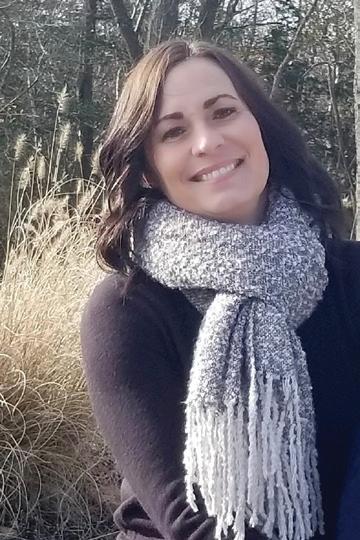
Chronic kidney disease (CKD) is common, occurring in 2–20 percent of all cats and approximately 10 percent or 30 percent of geriatric dogs or cats, respectively. Enhanced clinical diagnostic abilities have led to early detection of CKD. With appropriate medical management and owner engagement, survival can be quite long, extending the treatment period. This necessitates a thoughtful, evidence-based approach to management that is not only tailored to an individual animal but also avoids overwhelming the pet owner and disrupting the bond between the pet and the owner.
When a dog or cat is diagnosed with CKD the first important step is to determine the stage of CKD based on the system established by the International Renal Interest Society (Figure 1). Animals are sub-staged
based on the presence or absence of hypertension or proteinuria. Staging facilitates application of appropriate clinical practice guidelines for diagnosis, prognosis, and treatment of CKD.
Dogs and cats that are determined to be at risk for CKD should be monitored. Additional efforts should be taken to reduce and/or eliminate factors that may increase the risk of CKD.
Animals with stage 1 CKD need to be evaluated for a primary disease process. If identifiable (e.g., pyelonephritis), this disease should be managed; the therapeutic gain would be expected to be greatest in the early stages. Nephrotoxic drugs should be discontinued. Animals in this stage may require management of hypertension or proteinuria, if present.
In addition, feeding an early-stage renal diet might be considered in cats at this stage. The average expected life expectancy for dogs and cats with stage 1 CKD is >13 and >38 months, respectively.
When animals advance to stage 2 CKD, a diet formulated for management of renal disease should be considered for both dogs and cats. The average expected life expectancy for dogs and cats with stage 2 CKD is 7–13 and 16–38 months, respectively.

Animals in stage 3 CKD should have all of the previous therapeutic considerations but may also require the management of gastroenteropathy and secondary bone and mineral disorders in the early phases of stage 3 (i.e., serum creatinine 2.9–4 mg/dl), and management of metabolic acidosis, dehydration, and anemia in the latter phases of stage 3 CKD (i.e., serum creatinine 4–5 mg/dl). The average expected life expectancy for dogs and cats with stage 3 CKD is 3–7 and 5–26 months, respectively.
Dogs and cats in stage 4 CKD have the most severe clinical manifestations of renal disease. Placement of a permanent esophageal tube should be considered to alleviate the burden of medication and fluid administration on the owner and to ensure the delivery of adequate nutrition to the patient. This final stage is where renal replacement therapy in the form of hemodialysis or renal transplantation might be considered. The average expected life expectancy for dogs and cats with stage 4 CKD is <3 and <5 months, respectively.
The previously referenced average expected life expectancy for dogs and cats with the different stages of CKD has been pulled from a variety of clinical studies. It is believed that many factors can positively impact quality of life and improve survival of animals with CKD, including careful attention to proper nutrition with maintenance of body condition and effective management of hypertension, proteinuria, anemia, and renal secondary bone and mineral disorders.
Dr. Vaden is a professor of small animal internal medicine at the North Carolina State University College of Veterinary Medicine. The focus of Dr. Vaden’s scholarly activity has primarily been diseases of the kidney and lower urinary tract of dogs and cats. In recent years, this has become the primary focus of her clinical activities as well. Dr. Vaden has published over 100 peer-reviewed manuscripts and over 100 non-peer-reviewed manuscripts, book chapters, and proceedings articles.

Try out the CVMA by joining for six months at half the regular membership price! Your membership can pay for itself in savings!

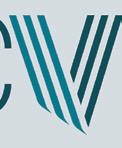

With a full registration to PacVet Live (offering 32 CEUs), your sixmonth membership will have paid for itself in savings! And, that doesn’t even include the savings and value you will receive with the rest of your member benefits, including:

Free legal consultation for veterinarians
Regulatory compliance resources and products

Insurance tailored for veterinary professionals at competitive rates
Savings on a variety of useful products and services
Chloe Cooper, DVMYour colleagues from across the state know the value of the CVMA. But don’t take our word for it—take theirs!
I know the CVMA legislative team is involved in current legislation and bringing voices to help them be heard. I also hope to continue participating in the CVMA’s CE programs. — Kristina Netherwood, DVM
I want to learn about the changes that might affect our veterinary profession and contribute to defend it if needed. – Miguel
Constantino, DVMI can give back to the profession that has given me a career with immense satisfaction. – Michael
Karle, DVMI believe in organized veterinary medicine. If we want a strong organization that advocates for our profession, we need to become active members and encourage our colleagues to join.
 — Julia Lewis, DVM
— Julia Lewis, DVM


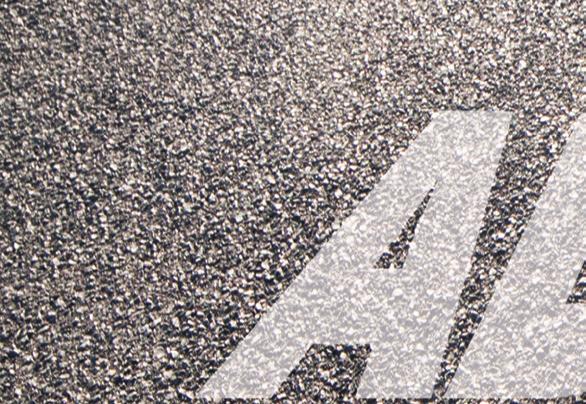








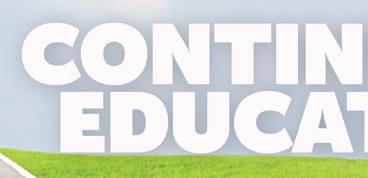








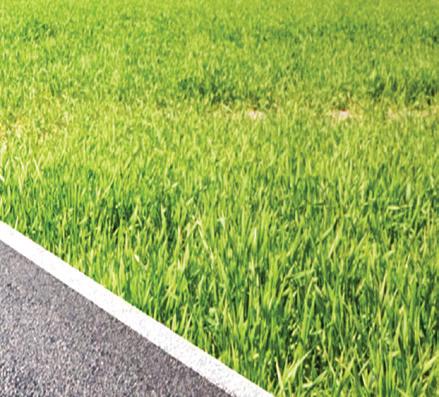




Now more than ever, legislation regarding issues impacting the veterinary profession is extremely important as new and unknown scenarios have emerged due to COVID-19. The CVMA Political Action Committee (CVMA-PAC) continues to monitor the changing environment and the legislation generated as a result.
The CVMA would like to thank members who, through their generous contributions, have shown their support for the CVMA-PAC. Due to member-contributed funds, we are able to build and maintain strong relationships with elected officials and political candidates. These relationships position the CVMA as legislators’ go-to resource for matters relevant to the veterinary profession and the wellbeing of animals in California.
We thank the following people for their contribution and ask those who have not yet contributed to do their part by either sending a check payable to the CVMA Political Action Committee at 1400 River Park Drive, Suite 100, Sacramento, CA 95815 or by contributing online by logging onto cvma.net > government > CVMA Political Action Committee (CVMA-PAC).
Here is the CVMA-PAC Honor Roll (payments received between July 2020 and December 2020):
Presidential Level
($1,000 and above)
Dr. Chris Cowing
Dr. James DeLano
Dr. Laurie Olshansky
Dr. Cheryl Waterhouse
Dr. Brent Wooden
Governor Level
($500–$999)
Dr. Gurnam Gill
Dr. Ken Pawlowski
Dr. Chris Wong
Senator Level
($150–$499)
Dr. Teresa Benton
Dr. Allison Naito
Dr. Dianne Sequoia
Dr. Satish Srungaram
Dr. Brad Steele
Capitol Level
($75–$149)
Dr. Carol Adams
Dr. Ruth Adams
Dr. Gerald Aguiar
Dr. Nina Akana
Dr. Yuka Akieda
Dr. Miranda Alexander-Pollard
Dr. Musa Ahmed Alshehabat
Dr. Nagy Amin
Dr. Phillip An
Dr. Karl Anderson
Dr. John Angelos
Dr. Mari Lynn Anger
Dr. Marlene Anschultz-Sacchetto
Dr. Evan Antin
Dr. Deborah Aparicio
Dr. Daniel Apple
Dr. Theresa Arteaga
Dr. Randall Aten
Dr. Amelia Ausman
Dr. Samuel Azab
Dr. Joanne Bak
Dr. Leah Baksh
Dr. Jessica Baldwin
Dr. Emily Bardo
Dr. Ayaka Barias
Dr. Hayley Barns
Dr. Ronald Barns
Dr. Bruce Barrett
Dr. Natalie Barrett
Dr. Gurvinder Bath
Dr. Arman Behboud
Dr. David Beltran
Dr. Neola Benedek
Dr. Erin Bennett
Dr. Kimberly Bercovitz
Dr. Kimberly Berg
Dr. Navdeep Bhakhri
Dr. Dorothy Black
Dr. Rebecca Blair
Dr. Kathleen Blanchard
Dr. Julio Bolivar-Dillon
Dr. Randall Bondurant
Dr. Laura Booth
Dr. Sally Borges
Dr. Christopher Bory
Dr. James Bower
Dr. Lauren Bradhurst
Dr. Cara Bradley
Dr. Chamkaur Brar
Dr. Jason Bravos
Dr. Michael Brink
Dr. Alice Bugman
Dr. Bruce Burch
Dr. Kristina Burling
Dr. Antonia Calomfirescu
Dr. Kristin Campbell
Dr. Laura Campbell-Monteiro
Dr. Eugene Cannarella
Dr. Aglaia Cardona
Dr. Ti any Cardoza
Dr. Evelyn Carter
Dr. Steve Carter
Dr. Daniel Casaus
Dr. Erin Cassiday
Dr. Juli White Cavanaugh
Dr. Todd Cecil
Dr. Isabel Chan
Dr. Sharon Chancellor
Dr. Mohamed Chaudhry
Dr. Oscar Chavez
Dr. Rebecca Childers
Dr. Hsiangjou Chiu
Dr. Soo Cho
Dr. Gerald Citek
Dr. David Clark
Dr. James Clark
Dr. Tristan Clark
Dr. Shawn Clemmer
Dr. Miguel Constantino
Dr. Michael Cooke
Dr. Bruce Curley
Dr. Kimberly Da ner
Dr. Maria de las Alas
Dr. Uta deHaas
Dr. Matthew Dekleva
Dr. Lea Del Rosso
Dr. Audra DeLaTorre
Dr. Kimberly Dembinski
Dr. Ryan DePaul
Dr. Anna DeVincenzi
Dr. Andrew Dibbern
Dr. Scott Dilorenzo
Dr. Michael Doe
Dr. Mary Dolf-Leavey
Dr. Amanda Dossett
Dr. Myron Downs
Dr. Oren Drelich
Dr. Rebecca Eaton
Dr. Ryan Ehlinger
Dr. Wagdi Estafanous
Dr. Pamela Etchegoyen
Dr. Joshua Ettlin
Dr. Lauren Evans
Dr. Elizabeth Facciotti
Dr. David Faria
Dr. Kathryn Farrar
Dr. Katrina Fedorka
Dr. Dennis Fees
Dr. Steven Fenster
Dr. Elizabeth Ferderbar
Dr. Christopher ‘Langdon’ Fielding
Dr. Joel Figueroa
Albert Filice, RVT
Dr. Justin Fischer
Dr. Nancy Fischer
Dr. Cynthia Fitzgerald
Dr. Cho Flores
Dr. Eve Flores
Dr. Rebecca Florio
Dr. Andrea Flory
Dr. Michelle Fluegge
Dr. Alison Flynn
Dr. Melissa Fogel
Dr. Brenda Forsythe
Dr. Amy Fousek
Dr. Marvin Frace
Dr. Stephen Franquelin
Dr. Rick Garcia
Dr. William Garfield
Dr. Adam Gerstein
Dr. Mandeep Ghumman
Dr. Michael Giacopuzzi
Dr. Richard Giacopuzzi
Dr. Amandeep Gill
Dr. Kanwalpreet Gill
Dr. Hannah Goorsky
Dr. Paul Gordon-Ross
Dr. Dana Graham
Dr. David Grant
Dr. Elizabeth Grey
Dr. Michelle Gri n
Dr. Arnold Gutlaizer
Dr. Gerald Haggard
Dr. Coco Hagos
Dr. Laura Halsey
Dr. John Hamil
Dr. Marion Hammarlund
Dr. Peter Hanna
Dr. Susan Hanser
Dr. Jim Hardesty
Dr. Sandra Hazanow
Dr. Jon Heit
Shawn Henriksen
Dr. Kirsten Hentz
Dr. Eric Herrgesell
Dr. Brittany Hill
Dr. Misty Hirschbein
Dr. Deborah Hofler
Dr. Sarah Hoggan
Dr. Je rey Horn
Dr. Cheryl Howerton
Dr. Yuchi Huang
Dr. Christina Hutson
Dr. Michael Ishida
Dr. An-Khanh Ives
Dr. Eric Jackman
Dr. Tanya Jackson
Dr. Whitney Janzen
Dr. George Je ries
Dr. Jessica Jellison
Dr. Je rey Jenkins
Dr. Valoree Johnson
Dr. Allison Joiner
Dr. Matthew Judd
Dr. Ninon Kafka
Dr. Kali Kaliannan
Dr. Marshia Keene
Dr. Jennifer Keil
Dr. Caitlin Kelly
Dr. Maged Kerolos
Dr. James Kerr
Dr. Charles Kessinger
Dr. Harvey Khella
Dr. Donghoon Kim
Dr. Seong Kim
Dr. Youngjoo Kim
Dr. Hannah Klasson
Dr. Dani Kobayashi
Dr. Briana Konigsberg
Dr. Mark Kopit
Dr. Wayne Kopit
Dr. Steven Krome
Dr. Bruce Kuesis
Dr. Girish Kumar
Dr. Karen Kurowski
Dr. Jamie Lake
Dr. Kellie Lam
Dr. Ronit Lavie
Dr. Joonghwa Lee
Nahee Lee
Dr. Lauren Lefebre
Dr. Claire Legallet
Dr. Steve Levine
Dr. Cody Lewis
Dr. Beth Lieblick
Dr. John Lindsey
Dr. Allegra Liu
Dr. Sharon Liu
Dr. Jay Longabach
Dr. Janet Lowery
Dr. Cattrina Lucas
Dr. Taylor Ludwick
Dr. Paul Lunsman
Dr. Susan MacInnes
Dr. Natalie Magallanes
Dr. Ravraj Manhas
Dr. Varinder Mann
Dr. Greg Marsolais
Dr. Adam Martin
Dr. Pavneet Mavi
Dr. Donald Mayer
Dr. Jessica Maynard
Dr. Diane McClure
Dr. Terry McDu ee
Dr. Kathleen McFarlin
Dr. Josephine McGrane
Dr. David McGrath
Dr. Maryssa McKinley
Kaitlyn McMorran
Dr. Tracey McNamara
Dr. Sandra McRoberts
Dr. Frank Merrill Jr.
Dr. Janet Meyerho
Dr. Nicole Milici
Dr. Jason Miller
Dr. Dale Misko
Dr. Louis Mogyoros
Dr. Claire Mollard
Dr. King Moon
Dr. Robin Mooney
Dr. Erick Muehlenbein
Dr. Deirdre Murdy
Dr. Joni Nasser
Dr. Phillip Nelson
Dr. Amy Ng
Dr. Allan Nguyen
Dr. Steven Nicholas
Dr. Karla Nichols
Dr. Liz Noppinger
Dr. Mark Nunez
Dr. Susan Ofsie
Dr. Kathleen Olson
Dr. Beverly Ort
Dr. Monica Ortiz
Dr. Benjamin Otten
Dr. Renee Owen
Dr. Richard Palmquist
Dr. Rosemary Panduro
Dr. Natalia Pau
Dr. Roger Paulson
Dr. Joseph Pavlik
Dr. John Peauroi
Dr. Zbigniew Piaseczny
Dr. Audra Pompeani
Dr. Nicoleta Popescu
Dr. Tatiane Faria Prado
Dr. Curtis Press
Dr. Glen Pyne
Dr. Kyle Quan
Dr. Cynthia Quezada
Dr. Jennifer Rau
Dr. Sarah Reardon
Dr. Carli Reece
Dr. Ann Reed
Dr. Joel Reif
Dr. Nicolaas Reijne
Dr. Jennifer Renner
Dr. Loren Reynolds
Dr. Molly Rice
Dr. Annette Richmond
Dr. Ricardo Rojas Rivas
Dr. Jyothi Robertson
Dr. Wendy Robinson-Kronkhyte
Yury Rodriguez
Dr. Katherine Roehl
Dr. Gary Rose
Dr. Brittin Ross
Dr. Anita Roussell
Dr. Monica Rudiger
Dr. Alexandria Rugg
Dr. Margaret Rusher
Dr. Nicholas Russell
Dr. Fred Saad
Dr. Evelyn Sagastume
Dr. Raghavan Sampathkumaran
Dr. Balpal Sandhu
Dr. Mukand Sandhu
Dr. Harmandeep Sanghera
Dr. Teresa Schiller
Dr. Mary Schlicting
Dr. Theodore Schulz
Dr. Richard Seidenberg
Dr. Christine Sellers-Stalie
Dr. S. Chris Shacoski
Dr. Eve Shaw
Dr. Sowkoor Shetty
Dr. Ram Singh
Dr. David Sleep
Dr. Geo rey Smith
Dr. Helen Smith
Dr. Dennis Spann
Dr. Stephen Spellman
Dr. Christopher Spence
Dr. Michael Stabbe
Dr. Rhonda Stallings
Dr. Carolyn Standen
Dr. Mark Starr
Dr. Amanda Stolpa
Dr. Elizabeth Stone
Dr. Brian Sullivan
Dr. Norman Switzer
Dr. Gabrielle Szwajkowska
Dr. Maie Takahashi
Dr. Irene Takata
Dr. Thomas Talbot
Dr. Jennifer Tavares
Dr. Gaylon TeSlaa
Dr. Joseph Thiels
Dr. Mia Tomola
Dr. Jose Torres
Dr. Paul Toste
Dr. Edward Trathan
Dr. Andrew Triolo
Dr. Leigh Trout
Dr. Ti any True
Dr. Alejandro Trujillo
Dr. Michelle Turner
Dr. Caitlin Underhill
Dr. Erin Updegrove
Dr. Kenneth Upton
Dr. Christine Van Every
Donna Vance
Dr. Sahib Vander
Dr. Daniel Vanderhoof
Dr. Brian VanHorn
Dr. Helena Vaynberg
Dr. Angela Vickery
Dr. Marcos Villasenor
Dr. Jit Virk
Dr. Lauren Wacholder
Dr. Michael Waldo
Dr. Catherine Wallace
Dr. Larry Wallace
Dr. Deborah Wallen
Dr. Hayden Webster
Dr. Wendy Weiberg
Dr. Ann Welton
Dr. Suzanna Elkjer Wharton
Dr. James Wiest
Dr. Beth Wildermann
Dr. Julie Wilkins
Dr. Kimberly Wilkins
Dr. Je rey Williams
Dr. Kirsten Williams
Dr. Rebecca Williams
Dr. Jill Williamson
Dr. Kevin Willitts
Dr. Brandon Wilson
Dr. Elizabeth Winchester
Dr. Jeremy Wong
Dr. Robert Woods
Dr. Michael Yackey
Dr. Cori Youngblood
Dr. Humphrey Yu
Dr. Amal Zakhary
Dr. Anna Ziedins
Cassidy Abrahamson, RVT
Lynne Adelman, RVT
Gloria Aguilar, CVA
Valerie Aguirre Zepeda, CVA
Diana Allen, CVA
Daniela Alvarez, RVT
Dr. Haylee Arimoto
Carol Arvidson, RVT
Emily Barber, CVA
Sarah Barkstelle, RVT
Dr. Nimir Bath
Dr. Marie Battle
Diane Bentz, RVT
Ashley Berenstein, RVT
Dr. Halley Barrett
Florence Bishop, RVT
Deanne Bonner, RVT
Maria Boyanton, RVT
Dr. Kirstie Boyd
Lilian Brown, RVT
Pam Buckman, RVT
Lillian Camacho, RVT
Sheena Carrero, RVT
Jennifer Caylor, RVT
Paulyn Cha, RVT
Amie Chapman, RVT
Tori Chesebrough Buckles, RVT
Denise Chu, RVT
KelliNicole Clements, RVT
Cora Clewell, RVT
Kerissa Clutters, RVT
Sarah Crum, RVT
Peggy Cuppy, RVT
Alisha Dally, RVT
Olivia Daniel, RVT
Lynette Davidson, RVT
Dr. Maisie Dawes
Dr. Marcus Dela Cruz
Dr. Rozalyn Donner
Sophia Dority, RVT
Dr. Chad Easthouse
Alice Ehrlich, RVT
Amaya Estelle, CVA
Kristina Farrer, RVT
Patty Ferrin, RVT
Adam Filowitz, RVT
Laura Fink, RVT
Crystal Franco, RVT
Jennifer Fujita, RVT
Katherine Gallie, RVT
Dr. Cheryl Garcia
Jomhalie Garcia, RVT
Shelby Garcia, RVT
Julie Gilroy, RVT
Rae-Lynn Godsey, RVT
Christina Goehring, RVT
David Gold, RVT
Samantha Graham, RVT
Hannah Greenspan, RVT
Kelli Gri th, RVT
Tara Hall, RVT
Susan Hamil, RVT
Karen Hartman, RVT
Lynzee Hatfield, CVA
Karolina Herrera, RVT
Amy Hirahara, RVT
Dr. Lauren Hobson
Kelsey Hodge, RVT
Danielle Horsley, RVT
Elaine Hortillosa, RVT
Kathy Hougardy, RVT
Esmeralda Huerta, RVT
Dr. Katherine Imig
Danette Ingrim, RVT
Valarie Johnson, RVT
Dr. Donald Jones
Janet Jones, RVT
Dr. Rachel Jorgensen
Lisa Kashak, RVT
Lauren Kelley, RVT
Dr. Emily Kian
Shawna Kliebe, CVA
Jake Knabb, RVT
Patricia Kohler, RVT
Dr. Cileah Kretsch
Melissa Kriegler, CVA
Alexandra Laudel, CVA
Briana Lawrence, RVT
Robin Lawton, RVT
Susan Lee, RVT
Dr. Laura Lei
Ross Lewin, RVT
Dr. Matthew Liang
Angela Lin, RVT
Dr. Hana Link
Dr. Andrew Logan
Keriauna Long, RVT
Dr. Sonia Lopez
Corinne Lorentzen, RVT
Dr. Cynthia Lynn
Jennifer Ma, RVT
Dr. Tina Madan
Andrea Marquez, RVT
Janis Marquez, RVT
Karin Marsicek, RVT
Susan Mathew, RVT
Dr. Mallory Mathews
Alyson Matsuo, RVT
Chelsea McCarty, RVT
Dr. Ethan McEnroe
Shalyn McKinley, RVT
Jesika Mendez, RVT
Yamelin Meza, RVT
Dr. Elisha Miller
Maria Miller, RVT
Dr. Michelle Miller
Tina Montoya, RVT
Cassie Moore, CVA
Iris Morales, RVT
Dr. Kelly Morello
Edward Moreno, RVT
Nicole Morgan, RVT
Donna Nagahisa, RVT
Dr. Monica Nassralla
Dr. Jennifer Neefe
Melody Neill, RVT
Emily Nichols, CVA
Brandy Nicoll, RVT
Alina Norris, RVT
Kimberly Oram, RVT
Matthew Ortega, RVT
Dr. Kathleen Parker
Italia Passanante, CVA
Alicia Peabody, RVT
Dr. Catherine Pepper
Bonnie Perkins, RVT
Mary Pinkham, RVT
Patricia Potts, RVT
Leslie Presentadi, RVT
Dr. Rebecca Radisic
Dr. Chloe Raftery
Desaray Roggasch, RVT
Dr. Amanda Rouse
Nicole Sanchez, RVT
Lisa Severy, RVT
Debbie Sharp, RVT
Jacqueline Shay, RVT
Dr. Inga She eld
Courtney Shower, RVT
Marisa Sinclair, RVT
Lyn Solomon-Linville, RVT
Misti Soo Hoo, RVT
Julie Stacey, CVA
Jeremy Still-Nichols, RVT
Amy Sturlini, RVT
Karen Taggart, CVA
Thomas Taormina, RVT
Dr. Jonathan Tarashansky
Chee Thao, RVT
Shelby Thurston, CVA
Angela Toth, RVT
Linda Tripp, RVT
Nancy Turnberg, RVT
Haylie Valdez, RVT
Melvyn Valera, RVT
Dr. Lauren Vaughan
Sancia Velasquez, CVA
Dr. Alexander Venturoso
Maria Virobik, RVT
Amanda Walker, RVT
Dr. Sydney Westbrook
Dr. Jacob White
Marilyn Wiley, RVT
Alexandra Williams, RVT
Kathryn Williams, RVT
Dr. Drew Wishnack
Nancy Wohl, RVT
Sandi Woods, CVA
Mackenzie Woolvett, RVT
Lori Yearton, RVT
Camille Yong, RVT
It’s not too late to contribute. The stronger the PAC fund, the stronger our voice will be. Visit cvma.net and click on CVMA-PAC under the Government tab to learn more about the PAC and to contribute online
Checks should be made payable to: CVMA Political Action Committee, 1400 River Park Dr., Suite 100, Sacramento, CA 95815 Contribute ONLINE at cvma.net
Veterinarians want insurance brokers and carriers who understand the complexities of veterinary practices and offer meaningful solutions for veterinarians’ insurance and risk management needs. This is the reason Veterinary Insurance Services Company (VISC) has teamed up with an industry leading insurance carrier, CNA Financial Corporation (CNA), as the new carrier for the CVMA Insurance Program. CNA, in conjunction with the expertise offered by VISC, has developed new insurance programs that address the needs of today’s evolving veterinary profession with solutions that allow our clients to better manage their risks and grow their profits.
The business owners’ policy (BOP) offered by VISC and CNA provides veterinary practice owners and independent contractor veterinarians with broad and relevant insurance protection. Offering numerous optional coverages and endorsements, the BOP can be tailored to the unique needs of every client. This flexibility allows veterinarians to customize their policies by selecting some or all of the following coverages:
• Building – Replacement cost valuation, no coinsurance
• Business Personal Property – Replacement cost, no co-insurance, applies to business personal property on premises, while in transit, or off premises at a temporary location for up to 60 days
• Blanket Building and Personal Property option
• Business Income and Extra Expense – 12 or 24-month options
• Business Income – Mobile Operations Vehicle option
• Animal Bailee (Loss of an animal in your care, custody, or control) – Limits from $5,000 to $1,000,000
• Deductible options ranging from $500 to $50,000
• General Business Liability –$1,000,000/$2,000,000 limits with option of $2,000,000/$4,000,000
• Veterinary Professional Liability –$1,000,000/$2,000,000 or $2,000,000/$4,000,000 option
• Automatically includes veterinary license defense with $100,000 limit
• Coverage extends to employees, interns, externs, and volunteer employees
• Employment Practices/Fiduciary Liability – $10,000 limit included, may be increased to $500,000
• Umbrella Liability – $1,000,000 to $10,000,000 limits available ($5,000,000 upper limit for large animal practices)
• Flexible Premium Payment – Annual, four, seven, or 10 installments, EFT/auto pay by check or credit card












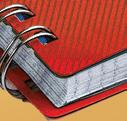



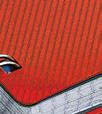



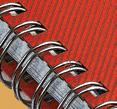











June 18–19 & June 26–27, 2021








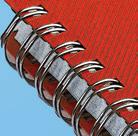






































































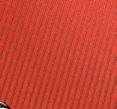




























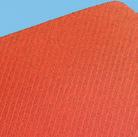

Since the 2021 Pacific Veterinary Conference cannot occur in-person in Long Beach as planned, we are bringing you PacVet Live—A Virtual Sea of CE! Enjoy four days of online, fully interactive learning featuring up to 32 CEUs for veterinarians, registered veterinary technicians, veterinary assistants, practice managers, and DVM and RVT students.











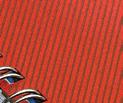



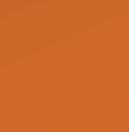
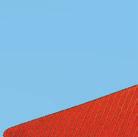

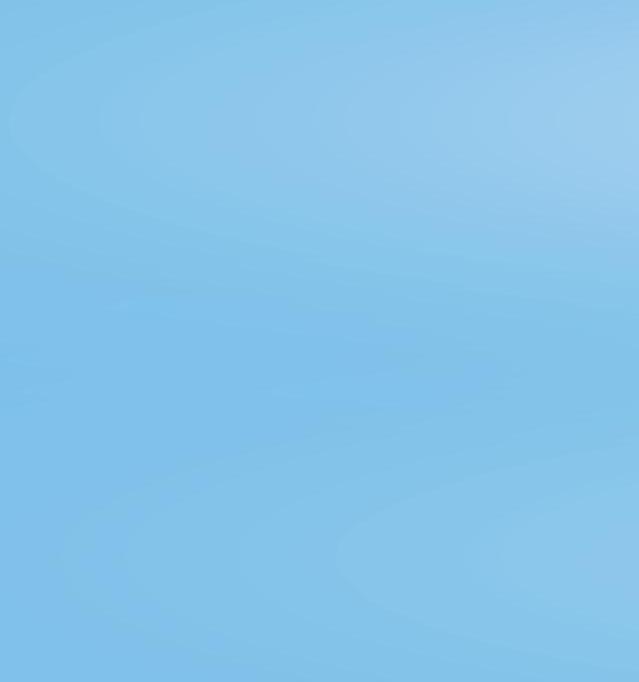
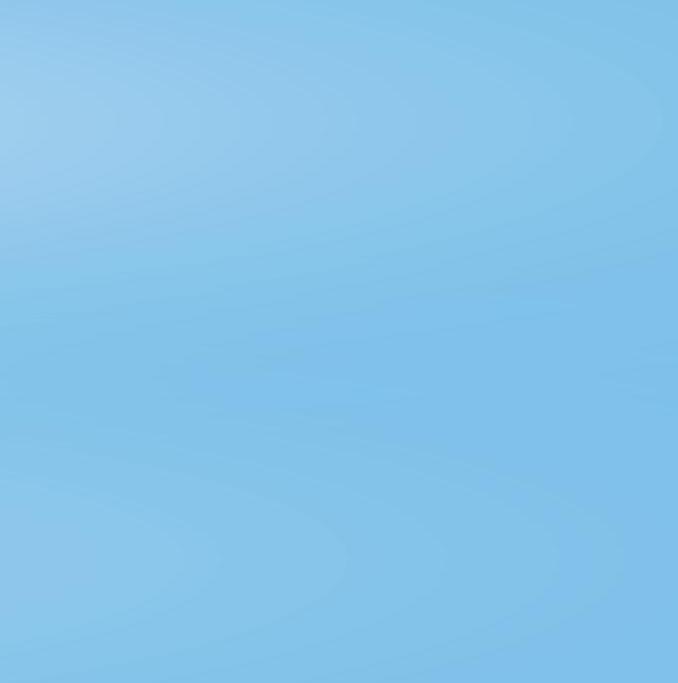
It wouldn’t be PacVet without some fun sprinkled in! With the help of some of our fabulous sponsors, we will bring some beachy fun activities, games, and raffles. So grab your beach chair, your computer, and set it up wherever you have an internet connection. Sunscreen is optional!


PacVet Live! is a conference.





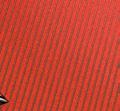

Mary Berg, BS, RVT, RLATG, VTS (Dentistry) | Dentistry, Practice


Mary Berg received her B.S. in biology/microbiology from South Dakota State University. She is a charter member of the Academy of Veterinary Dental Technicians and received her veterinary technician specialty in dentistry in June 2006. Ms. Berg teaches veterinary technology and is currently the president of Beyond the Crown Veterinary Education. She has also authored or coauthored over 70 publications, including the Journal of Dental Research and several veterinary and veterinary technician journals.
Thomas Boyer, DVM, DABVP (Reptile and Amphibian Practice) | Reptiles

Dr. Boyer owns the Pet Hospital of Peñasquitos in San Diego where he treats a diverse reptile and amphibian caseload. He co-founded the Association of Reptilian and Amphibian Veterinarians, started the Journal of Herpetological Medicine and Surgery (JHMS) in 1991, and served as JHMS editor for 18 years. Dr. Boyer also helped establish the American Board of Veterinary Practitioners’ (ABVP) reptile and amphibian practice specialty and became one of the ABVP’s first diplomates in that specialty in 2011.

Megan Brashear, BS, CVT, VTS (ECC)



Megan Brashear graduated in 2000 with a BS in veterinary technology and obtained her veterinary technician specialty in emergency and critical care in 2004. She has worked in emergency and critical care since 2000 and is the small animal veterinary nursing manager at the Purdue University Veterinary Hospital in West Lafayette, Indiana. Megan truly enjoys the opportunity to work with technician supervisors, and to teach and train technicians and students on the hospital floor.
This speaker is generosly sponsored by





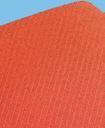
Anthony
Dr. Carr received his veterinary education at the Ludwig Maximilians University in Munich, Germany. After three years in practice, he returned to the US to complete an internship at the University of Missouri-Columbia and a medicine residency at the University of Wisconsin-Madison. He is a professor of small animal internal medicine in the Department of Small Animal Clinical Sciences at the Western College of Veterinary Medicine. He is widely published in the US and Europe.
Stephen Cital, RVT, RLAT, SRA, VCC, CVPP, VTS-LAM (Res.
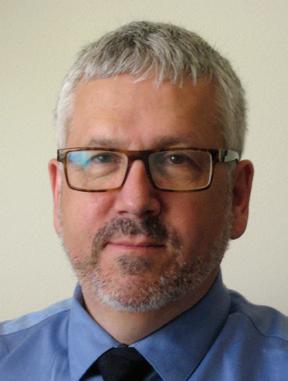

Stephen Cital is a registered veterinary technician at Stanford University and executive director of the Academy of Laboratory Animal Veterinary Technicians and Nurses. While he specializes in anesthesia and pain management, he is also a veterinary cannabis counselor, one of a handful in the country, and is an independent researcher on the topic. He serves on advisory boards for local veterinary technician colleges and is on the Elanco Technician Council of Pain Experts.
Dr. Davis received her bachelor’s and veterinary degree from Virginia Tech and both her master’s degree and Ph.D. from North Carolina State University. She is board-certified in veterinary internal medicine (LA) and veterinary clinical pharmacology. Her current position is associate professor of clinical pharmacology at VAMD College of Veterinary Medicine. In addition to teaching, Dr. Davis oversees the VetMed Analytical Laboratory, which performs and analyzes pharmacokinetic/toxicokinetic studies.
Dr. Echols works at Parrish Creek Veterinary Clinic in Centerville, Utah. He completed a residency at the Medical Center for Birds in Oakley, California, and he is board-certified in avian practice. Dr. Echols is also the creator of several educational DVDs, including the Captive Foraging DVD and the Expert Companion Bird Care Series. Additionally, he is the founder of Scarlet Imaging. Dr. Echols is a frequent author and lecturer.
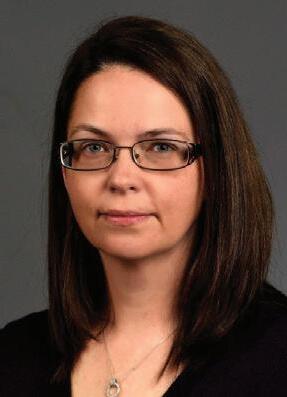
Dr. Hart earned her veterinary degree from Colorado State University while also completing certificate programs in canine rehabilitation therapy and small animal and equine acupuncture. After completing a small animal rotating internship program in Los Angeles, she pursued additional veterinary orthopedic and sports medicine training. She then returned to Colorado State University to complete a combined master’s degree and residency in small animal sports medicine and rehabilitation. She is currently the sports medicine and rehabilitation specialist at Cornell University Veterinary Specialists.
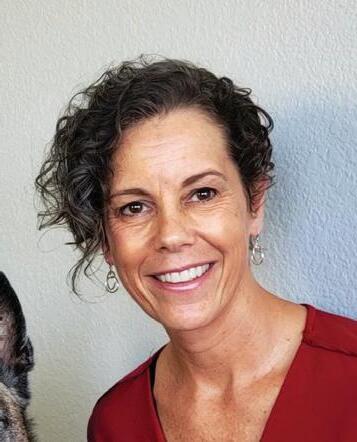

Debbie Martin, LVT, CPDT-KA, KPA CTP, VTS


Debbie Martin has been a full-time registered or licensed veterinary technician since 1996. She is the animal behavior technician for Veterinary Behavior Consultations and co-owner of TEAM Education in Animal Behavior. Ms. Martin is a veterinary technician specialist (VTS) in behavior and is a certified animal trainer, as well as a published author.
Dr. McCobb is a clinical associate professor of anesthesia at Cummings School of Veterinary Medicine at Tufts University. She is a board-certified veterinary anesthesiologist and serves as cosection head for community medicine and assistant director of the Center for Animals and Public Policy. She teaches companion animal policy, ethics, anesthesia, and euthanasia at Tufts. Her published work covers a variety of topics, including anesthesia and shelter animal welfare.

After completing his doctorate in veterinary medicine from Washington State University, Dr. Selberg completed an equine sports medicine internship at Virginia Equine Imaging in Middleburg, VA. He is a certified member and lecturer at many International Society of Equine Locomotor Pathology continuing education events. Dr. Selberg is also a Fédération Équestre Internationale-treating veterinarian. Most recently, he was the onsite imaging consultant for the 2018 World Equestrian Games.

David
Sara Thomasy, DVM, DACVO, Ph.D.
Dr. Thomasy is a professor in the Department of Surgical and Radiological Sciences at UC Davis School of Veterinary Medicine. She received her B.S. in biology from The Ohio State University in 2000, DVM from UC Davis in 2005, and Ph.D. in pharmacology and toxicology from UC Davis in 2006. Dr. Thomasy is a diplomate of the American College of Veterinary Ophthalmology and served as a reviewer for several journals including Investigative Ophthalmology & Vision Science and Veterinary Ophthalmology

Dr. Upchurch graduated with a DVM degree from Auburn University in 2010. He went on to complete a rotating internship at the University of Pennsylvania, a surgical internship at Louisiana State University, and a surgical residency at Kansas State University. He is currently an assistant professor of soft tissue surgery at Kansas State University. His clinical interests include suture materials, wound management, and reconstruction, as well as preclinical and clinical instructorship of veterinary students.
Shelly Vaden,
Dr. Vaden is a professor of small animal internal medicine at the North Carolina State University College of Veterinary Medicine. The focus of Dr. Vaden’s scholarly activity has primarily been diseases of the kidney and lower urinary tract of dogs and cats. In recent years, this has become the primary focus of her clinical activities as well. Dr. Vaden has published over 100 peer-reviewed manuscripts and over 100 non-peer-reviewed manuscripts, book chapters, and proceedings articles.
Jacqueline Whittemore, DVM, Ph.D., DACVIM (SAIM) | Gastroenterology


Dr. Whittemore received her DVM from the University of California, Davis in 2000, followed by a small animal internal medicine residency and Ph.D. at Colorado State University. She is an associate professor and the Acree Chair of Medicine at the University of Tennessee, Knoxville. Her research focus is on the identification and amelioration of adverse effects of exogenous therapies, such as antiplatelet, immunosuppressive, and antibiotic therapies on the gastrointestinal tract and microbiome/metabolome of dogs and cats.
Jarred Williams, DVM, MS, Ph.D., DACVS-LA, DACVECC | Emergency and Critical Care


Dr. Williams received his Bachelor of Science (2000), Master of Science (2002), and DVM (2006) degrees from the University of Georgia. He did his rotating internship at Alamo Pintado Equine Medical Center in California and completed residencies in equine surgery and equine emergency/critical care and his Ph.D. degree at Ohio State University. Currently, he is a clinical associate professor of surgery and emergency and critical care at the University of Georgia.
This speaker is generously sponsored by
Ultrasound and Radiography of the Foot
Geriatric Osteoarthritis – More Than Just
Are You Missing an Opportunity to Increase (or Replace) Revenue?
Diagnostic Imaging in the Pre-Purchase Exam Dr. Kurt Selberg
How Do I Treat This Forelimb Lameness? A Case-Based Approach Dr.
Beak Anatomy, Form, Function, and Available Treatments (Part 2)
Train Your Team, Keep Your Team
Where to Image After Blocking Dr. Kurt Selberg
Fun with Pharmacology and Nutraceuticals: What Works and What Doesn't

of the Equine Stifle
How Do I Treat This Hind Limb Lameness?
Pancreatitis – Clinching the Diagnosis
The Top 5 Common Emergencies and What to Do
The Top 5 Common Emergencies and What to Do
Kidney Disease 2: Nutrition, Secondary Mineral Disorders, and Gastrointestinal
Dive
The Cutting Edge of Medicine: An Update on What’s New in Research (Part 1)
Management in the Critical Patient
Surgery for the Small Animal Practitioner
The Cutting Edge of Medicine: An Update on
New in Research (Part 2)
Do you feel like you are treading water when it comes to technology?







Have no fear the PacVet Live lifeguards will be there to help you navigate the virtual conference experience. If you have any troubles logging into any sessions during the conference, we will have staff members available by phone to help you with the process. Want to dip your toes in the virtual conference waters ahead of time? Before the conference, you’ll receive an invitation to try out the process of logging on with one of our staff members who can answer any questions you might have. We will have you surfing the online conference wave like a pro in no time!
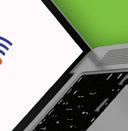




• Online: visit PacVet.net



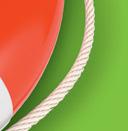

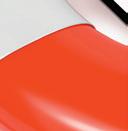
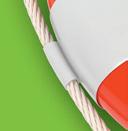
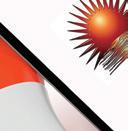

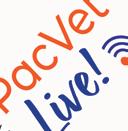


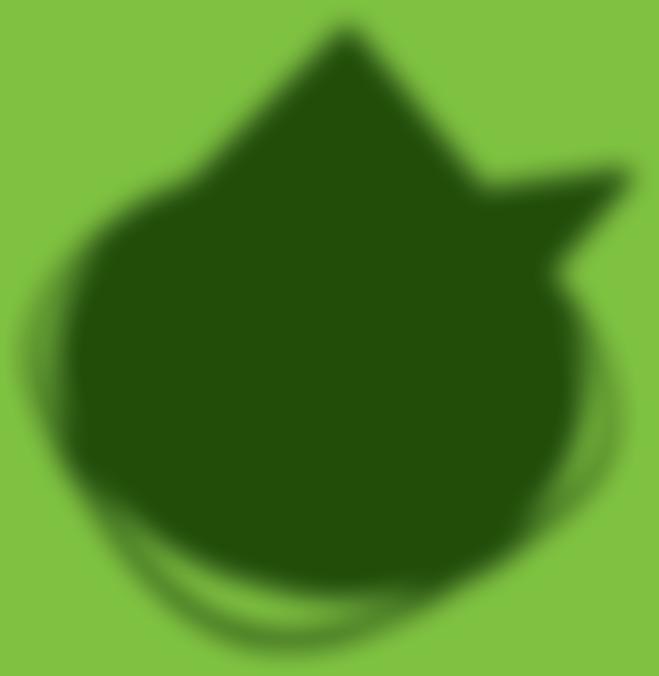
• Mail: Fill out the registration form on the next page and mail it with payment to Pacific Veterinary Conference, 1400 River Park Drive, Suite 150, Sacramento, CA 95815

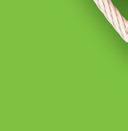

• Fax: 916.646.9156
• Call: 800.655.2862 to register and pay with credit card
Early-bird registration is good through April 14, 2021. There is a $75 savings based on full conference registration


CVMA Member: m Yes m No
June 18-19, 2021
June 26-27, 2021
Do you want us to use this information to update your CVMA profile? m Yes m No
Please check one: m DVM m VMD m RVT m CVT m LVT m Practice Manager m Veterinary Staff m Other
Registration Deadline: June 11, 2021 (Registrations sent by mail must be received by June 11, 2021)
Enclosed is a check for $ Charge my VISA/MasterCard/Discover/AMEX $
CVMA Distinguished Life Members
Please call the CVMA office at 800.655.2862 for complimentary registration.
General Information
Mail registration form with payment to: CVMA, 1400 River Park Drive, Suite 100, Sacramento, CA 95815. You may also register by faxing the form to 916.646.9156, calling 800.655.2862 or register online at pacvet.net.
Full registration includes: Up to 32 CEUs, lecture notes, and a certificate of completion.
Conference/Login Information:
• Login information provided by the CVMA should not be shared with others; doing so may hinder your own access, as webinar is by pre-registration only. Attendance of PacVet Live is only for registered attendees.
By registering for PacVet Live 2021, I agree to the rules and regulations and the cancellation/refund policy of this conference. For complete rules and regulations, visit PacVet.net.

All cancellation requests must be made in writing and submitted either by fax, email, or regular mail no later than May 21, 2021 to receive a full refund, less 10 percent administration fee. No refunds for cancellations or registrations received after this date. Refunds due will be paid within 45 days upon written cancellation request.
Attn: Meetings & Events Department 1400 River Park Drive, Suite 150 Sacramento, CA 95815
By fax: 916.646.9156
By email: info@pacvet.net
Any and all changes or substitutions after submission must be submitted in writing by either mail, fax, or email to above by June 11, 2021.
• Course materials provided by CVMA is for use by the registered attendee only and may not be reproduced or shared with others.
• Audio, documents, materials, chat, and Q&A exchanged or viewed during the session may be recorded. By joining a session, you automatically consent to such recordings.
• CVMA and its service provider of audio and online conferencing services are not responsible for unauthorized access to information by hackers or others that obtain access through illegal measures.
On November 30, 2020, the Department of Industrial Relations Division of Occupational Safety and Health (Cal/OSHA) implemented emergency COVID-19 Workplace Safety and Prevention regulations that apply to nearly all California businesses. The emergency regulations took effect immediately, requiring California businesses to implement extensive new workplace safety and health measures to protect workers against COVID-19.
The emergency regulations—which amended California Code of Regulations, Title 8, section 3205 and added several other sections—are in effect until October 2, 2021, unless otherwise indicated by Cal/OSHA. They require, among other things, an extensive written COVID-19 Prevention Program, which may be incorporated into an existing Injury and Illness Prevention Program (IIPP) or be written as a separate document.
The regulations provide definitions for several important COVID-19 terms such as “exposure,” “workplace outbreak,” “high-risk period,” “symptoms,” and “tests.”

The law also requires employers to implement the following components of the written COVID-19 Prevention Program:
System for Communicating Describes methods by which employees must report COVID-19 information, including potential workplace hazards, and states how important information, such as potential exposures, will be communicated by the employer.
Requires the employer to develop and implement a process for screening employees for COVID-19 symptoms and for periodically evaluating the workplace for potential COVID-19 hazards. This includes a workplace-specific identification of all interactions, areas, activities, processes, equipment, and materials that pose a threat.
in the Workplace Outlines the steps the employer must take to gather specified information about COVID-19 cases or potential exposures and respond accordingly. The employer must follow a step-bystep action protocol to properly identify potentially exposed individuals, notifying them while keeping identifying information of other persons confidential, with stated exceptions.
Correction of COVID-19 Hazards Indicates how the employer will implement effective policies and procedures for correcting unsafe or unhealthy workplace conditions or practices in response to identified hazards.
Training and Instruction Mandates the employer to train and instruct workers on COVID-19 policies and procedures, available COVID-19 benefits, COVID-19 modes of infection, symptoms, methods of physical distancing, the importance of handwashing, and use of face coverings.
Physical Distancing Establishes a six-foot minimum distance between all persons in the workplace, with exceptions, and lists methods to facilitate effective distancing.
Face Coverings Requires the employer to provide face coverings and ensure that they are properly worn by employees, with listed exceptions. For employees who cannot wear a face covering, the employer must put other controls in place to minimize potential COVID-19 exposure.
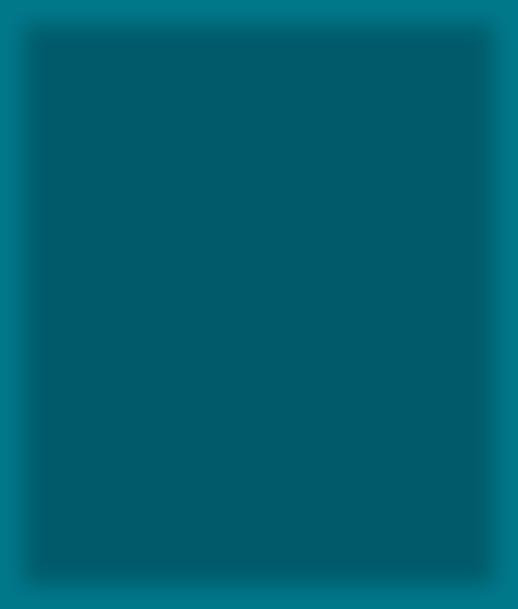
Other Engineering and Administrative Controls Indicates how the employer will reduce transmission of COVID-19 through engineering controls, cleaning and disinfecting protocols, physical barriers, and use of other personal protective equipment.
Reporting, Recordkeeping, and Access Declares the circumstances under which the employer must report COVID-19 cases to health authorities and to other employees, and outlines recordkeeping requirements including what information must be retained and who may access it.
Exclusion of COVID-19 Cases Sets criteria by which the employer must exclude COVID-19 cases, including exposed individuals, from the workplace. This section also requires employers to continue and maintain the excluded employee’s earnings, seniority, and other rights and benefits during the exclusion period. This section also lists exceptions to workplace exclusions and their associated protections.
Return to Work Criteria Establishes timelines for the employer to follow when allowing employees who have had COVID-19 symptoms or who have tested positive for COVID-19 to return to work.
Governor Gavin Newsom issued a declaration in 2020 stating that all workers not working from home who file a workers’ compensation claim for COVID-19 illness will be assumed to have contracted COVID-19 from the workplace. To protect employees, fight the spread of COVID-19, and to avoid costly workplace illnesses, employers should comply with the law and implement a COVID-19 safety and prevention program immediately.
This article is for informational and general educational purposes only. It is not intended to take the place of legal advice nor should it be considered as a legal interpretation. Although significant e ort has been made to ensure the accuracy and completeness of the information at the time of publication, the CVMA shall not be responsible for any errors or omissions, or any agency’s interpretation, application, or enforcement of the information presented herein.
Purchase your CVMA Guide to Cal/OSHA Compliance subscription today!
The CVMA Guide to Cal/OSHA Compliance is an online tool created specifically to help California veterinary practices with Cal/OSHA compliance. It includes educational materials, required forms, training templates, implementation and recordkeeping resources, and a step-by-step wizard that simplifies the process of creating a customized written safety plan for your practice. Each section has clear instructions and a logical progression which results in a safety program catered to each individual subscriber.
The California Department of Industrial Relations Division of Occupational Safety and Health (Cal/OSHA) has implemented emergency COVID-19 workplace prevention regulations which require California businesses to immediately implement extensive new workplace safety and health measures. They include a written COVID-19 Protection Program policy as part of the Injury and Illness Prevention Program (IIPP). The CVMA Guide to Cal/OSHA Compliance has recently been updated to include the required COVID-19 component.
The CVMA Guide to Cal/OSHA Compliance is available only to CVMA members. The online subscription-only guide can be accessed and updated at anytime.
For more information or to renew your subscription visit cvma-inline.net/regulatory-guide, call the CVMA at 800.655.2862 or email sta @cvma.net.
CVMA is offering a promotional rate of $223 for new subscriptions until February 28.
An article appearing in the last edition of California Veterinarian discussed how the documentation of expectations and job performance could facilitate a better work environment. That article emphasized the importance to the employer of maintaining documents relating to employees, particularly when issues of discipline and termination are involved. It is also important that employees and employers understand that employees have rights relating to documents that concern their job performance. This article focuses on the employees’ rights, including their rights of access to their personnel files and other documents, as well the impact of good documentation on creating a positive place to work.
“Transparency” has been popularized to denote the openness and candor perceived as necessary to create trust and positive communications. As clear expectations and communications facilitate a positive and productive workplace environment, transparency is important. There are perceptions that the records and documents maintained by an employer regarding an employee may be secreted in a “desk file” and used only by the employer if it needs to take action or protect itself from the employee. That is not the case. The employee has clear rights to review many employmentrelated documents. Accordingly, documents should be created and maintained to accurately memorialize the employee’s status and communications between the employer and the employee, and not merely to “set up” the employee.
California law provides that current and former employees (or a representative) have the right to inspect and receive a copy of their “personnel file.” There is no clear definition of what is contained in that file. The Labor Code generally describes the records to be produced to a requesting employee as “the personnel records that the employer maintains relating to the employee’s performance or to any grievance concerning the employee.” The California Department of Industrial
Relations has opined that records that are used or have been used to determine an employee’s qualifications for promotion, additional compensation, or disciplinary action (including termination) are generally considered to be “personnel records.” This is a very broad definition that goes beyond documents that the employer may choose to maintain in a personnel file. The following are some examples of personnel records (this list is not all inclusive):

1. Applications for employment
2. Payroll authorization forms
3. Notices of commendation, warning, discipline, and/ or termination
4. Notices of layoff, leaves of absence, and vacations
5. Notices of wage attachments or garnishments
6. Education and training notices and records
7. Performance appraisals/reviews
8. Attendance records
Procedurally, a current or former employee may (directly or through their authorized representative) request to inspect and/or receive a copy of their personnel records. Inspections must be allowed at reasonable times and intervals, but not later than 30 calendar days from the date the employer receives a written request. Within that time frame, the employer shall provide a copy of the personnel records at a charge not to exceed the actual cost of reproduction (including postal charges). The employer may redact the name of any nonsupervisory employee that appears in the documents. The employer is required to keep these documents for at least three years after the termination of the employment relationship. If the employer fails to provide these records, the Department of Labor Standards Enforcement will enforce the inspection and copying rights and impose a $750 penalty.
Employers are also required to keep accurate payroll records on each employee, which must be made available for inspection by the employee upon reasonable request. The scope of “payroll records” is
broad enough to include incentive and production plans as well as the formulas and records supporting payment under these plans. These records must be made available to a current or former employee (or their agent) upon 21-days’ written notice.
Employees are also entitled to copies of documents that they have signed as an employee.
The employee may protect his or her status by documentation as well. Employers may not retaliate against employees who assert a legal right or privilege. Employees may also be protected from retaliation for making claims of discrimination, harassment, or illegal practices. Employers are required to retain documents submitted by employees containing allegations that are protected. The existence of the documents in the employer’s file may facilitate an employee creating the nexus between the protected activity and subsequent adverse employment actions necessary to establish a claim of retaliation.
So how does proper documentation and the transparency of those documents contribute to a positive working environment? Simply, it forces communication. And, the understanding that an employee’s records are an “open book” should facilitate candor and accountability.
As mentioned in our prior article, a comprehensive, updated job description is an important document as it establishes the baseline for expectations and performance. The job description should be vetted at hiring and reviewed on a regular basis. A structured, periodic review process compels the employer and the employee to discuss the job description and any changes thereto, and to clearly confirm (or establish) expectations and promote the accountability of both parties.
Proper documentation includes scheduled and systematic performance reviews. Too often, reviews are delayed due to
the press of business, or not conducted at all. They should be scheduled and timely performed. Efforts should be made to provide objective feedback, and the responsibility for preparing and delivering the review should be undertaken by someone with real management responsibility. Reviews give employees valuable input and the opportunities to make adjustments in performance necessary to succeed or, alternatively, adjust their expectations. Importantly, reviews stimulate communication. Review summaries should be accurate and employees should have the opportunity to comment on them. Again, the personnel records should accurately reflect the employer’s expectations and the employee’s performance. If there are disparate perceptions, they should be addressed at that time.
If problems develop or expectations are not being met, the employer should institute a performance review. The review should be documented as well as the employee’s comments. Although this may be a disciplinary process with a “write-up,” it need not be. If the employee believes that there are concerns about job expectations, it would be reasonable for them to request a meeting.
In some instances, the employee may determine that the work environment is not what they want. Or, it may become clear that they will not succeed. There may be benefits to these realizations. Not all employment relationships work well. Too often, however, the relationship deteriorates because issues are not identified and addressed.
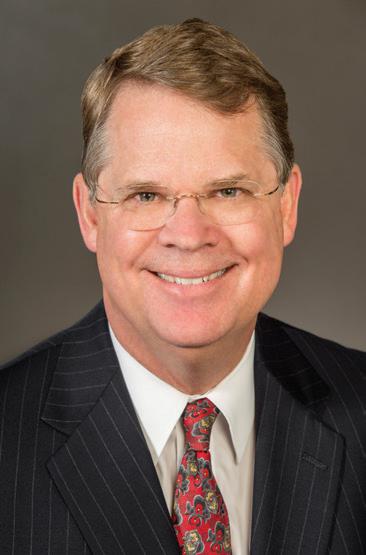
There is no substitute for good communications in an employment relationship. In an ideal world, the documentation should follow the communications. The workplace is a busy place. Often communications, particularly difficult ones, fall to the bottom of the priority level. If both the employer and the employee appreciate that the personnel file is a transparent reflection of expectations, performance, and aspirations, the attention to documentation may facilitate communication and contribute to a better work environment.

 By W. Kent Fowler, DVM
By W. Kent Fowler, DVM
eterinary medicine is an exciting and rewarding career meant to protect the health and wellbeing of animals, and yet opportunities abound for pathways that diverge from only practicing small or large animal medicine. The divergent pathways are especially inviting to many millennials and Generation Z veterinarian graduates who have a different, and perhaps healthier, vision of work-life balance. A more structured work environment with defined days off, time to raise a family, and family together-time can be benefits of alternative careers in veterinary medicine.
Employment opportunities for veterinarians include regulatory service, military service, teaching and research, public health, aquatic animal medicine, animal welfare, wildlife medicine, private or corporate clinical practice, and many others. This vast array of employment pathways also provides managerial and leadership opportunities as well as showcases communication skills.
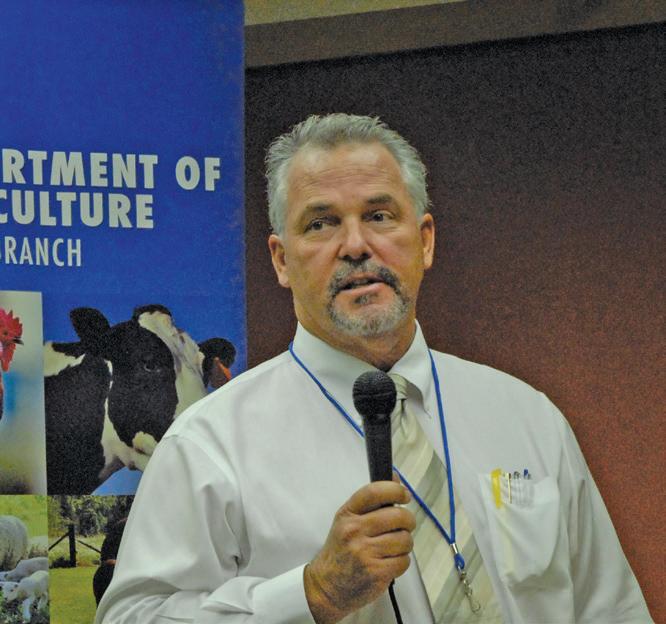
After graduating from veterinary school, I was fortunate to be hired into a large animal practice on the central coast of California. It was at the same practice where I had worked various jobs since a sophomore in high school. My dream came true—my boss was a great veterinarian and we had the best clients in the world. I experienced it all—five percent small ruminants, 10 percent dairy, 30 percent beef cattle, and 55 percent equine. After eight years, I became a partner in the practice and it evolved into more and more equine work. After 27 years in this practice, which had become 100 percent equine, I sold the practice and took one of
Vthe divergent pathways into regulatory medicine with the California Department of Food and Agriculture (CDFA).
Leaving private practice and hundreds of wonderful clients in 2004 was extremely difficult but I was ready for the challenges presented by the CDFA Animal Health Branch (AHB). My initial position within AHB was in Emergency Programs, and I was tasked with preparedness and response plans for foreign animal diseases (FADs – i.e., foot and mouth disease, anthrax, exotic Newcastle disease, piroplasmosis) and other regulatory diseases (i.e., tuberculosis, brucellosis, West Nile virus, pseudorabies, scrapie). After a year with AHB, I was promoted to AHB Chief and all the administrative and leadership challenges associated with that position. I have had the pleasure of serving as AHB Chief for the past 16 years and will be retiring at the end of 2020.
I have been afforded the pleasure of working under the California State Veterinarians, Dr. Rich Breitmeyer and then, following his retirement, Dr. Annette Jones. Both brought professionalism and dedication to veterinary regulatory medicine, both were great mentors to me, and both are highly respected by other state veterinarians. I have also been blessed with a great staff of veterinarians and other AHB professionals. My “second” career as a regulatory veterinarian has really allowed my 44-year veterinary career to come full circle. Regulatory veterinary medicine has provided challenges in preventing FADs from entering the U.S. and California, success in eradicating FADs as a team, pride in writing laws and regulations to protect the livestock industry, and surpassing bureaucratic hurdles to improve livestock traceability. This career path has also provided more family time and pursuit of recreational activities, comprehensive health, dental and vision insurance, excellent retirement, and a great team of colleagues to work alongside.
Regulatory veterinary medicine may not be for all veterinarians but as the poet Robert Frost wrote in “The Road Not Taken”: “I took the one less traveled by/And that has made all the difference.”
Despite an emergency fee increase in 2018, the VMB announced in January of 2020 that it had concerns of insolvency. In an effort to avoid the deterioration of services and possible shutdown, the VMB initiated an emergency rulemaking process to address this problem by proposing to raise all license and permit fees in the veterinary profession to the maximum amount allowed by statute.
As an advocate for the veterinary profession, the CVMA sent letters to the VMB in January and November expressing concern regarding the proposed fee increases, and spoke out during several VMB meetings with concerns about the fee increases and underlying causes. One of those concerns pertained to the underlying problems associated with California’s system for funding regulatory boards. When expenses are increased by the state, such as those imposed by the Attorney General’s Office, the regulatory boards are put in the position of a budget deficit due to increased expenditures. Lengthy and costly enforcement actions against veterinary professionals add considerable costs to an already tight budget. Legislative mandates to increase premises inspections, the inefficiency of the BreEZe system,
slower than projected revenues from the VACSP program, lack of sufficient staff, and various unanticipated expenditures are not the fault of licensees, but of a system that continues to stretch the Veterinary Medical Board—and other state regulators—with unanticipated expenses.
The CVMA informed the VMB that the fee increases are extremely burdensome to the veterinary profession. In particular, the CVMA emphasized that the strain imposed on Registered Veterinary Technicians was excessive, since their permit fees have more than doubled because of this emergency regulation. In response, the VMB indicated that it would explore alternatives that might reduce the burden on RVTs associated with these fee increases, including the possible use of a tiered fee structure in which larger veterinary practices would be subject to higher premises permit fees than their smaller counterparts.
The CVMA will continue to represent the profession on this important issue and contribute to discussions at the VMB to address public comment and stakeholder concerns.
In October and November of 2020, the CVMA attended public meetings at the California Board of Pharmacy (BOP) to express concern over enforcement actions that could threaten the availability of important veterinary drugs in the state. During 2020, BOP inspectors informed several compounding pharmacies that compounding from bulk substance ingredients is against federal law. The FDA, however, has noted that some veterinary drugs are not available in an FDA-approved form and therefore may only be obtained through compounding from bulk substances. Thus, the FDA has exercised enforcement discretion in these instances and additionally published a draft Guidance for Industry (GFI #256) to specifically address the use of bulk substances in compounding veterinary drugs. This guidance has received extensive public comment and has not yet been finalized.
At the BOP’s Enforcement Committee and full board meetings in November, the CVMA explained the veterinary profession’s difficulty when medication supplies that may only be obtained from bulk ingredients are threatened, and urged the BOP to stop enforcement activities until the FDA finalizes GFI #256. Examples of

such ingredients include apomorphine hydrochloride, cisapride, guaifenesin, metronidazole benzoate, miconizole nitrate, potassium bromide, tacrolimus, and itraconizole with DMSO.
BOP members concluded their discussion of the issue by passing a motion directing their enforcement staff to use discretion in issuing orders to pharmacists regarding the use of bulk substances in compounding veterinary drugs. The CVMA will continue to monitor this and other issues relating to veterinary compounding at the BOP.
Three important proposed regulations affecting registered veterinary technicians are currently under review by the California Veterinary Medical Board (VMB). The CVMA is committed to supporting the RVT profession through active commentary concerning these regulations.

This proposed regulation expands the tasks that RVTs may perform in an emergency under California Code of Regulations Title 16 (CCR 16), section 2069. The proposed changes would allow RVTs, following direct communication with a supervising California-licensed veterinarian, to administer drugs (including controlled substances) to control shock, manage pain, provide sedation, and prevent suffering in conjunction with euthanasia. The proposal would also allow for the administration of parenteral fluids and would permit an RVT to act pursuant to protocols established by the supervising veterinarian in the event that direct communication during an emergency is not possible.
The CVMA submitted a letter in support of these proposed changes. The regulations are currently under review by the Department of Consumer Affairs (DCA) and are expected to progress through the rulemaking process in 2021.
This proposed rule would amend CCR 16 section 2036 to allow an RVT to compound drugs under indirect veterinary supervision and would change the level of supervision under which an RVT may apply a cast or splint from direct to indirect. The CVMA also supports this proposed regulatory change, which is also currently under review by the DCA.
The CVMA continues to speak at VMB meetings and submit comment letters to voice concern over the emergency fee increase instituted in January of 2020 and upheld later in the year. Among the highest of concerns expressed by the CVMA was the substantial increase in RVT permit fees, which rose from $160 every two years to $350 every two years. Citing the undue burden imposed on RVTs by this fee doubling, the CVMA advocated for the RVT profession by urging the VMB to consider alternative methods of revenue generation. The VMB is currently researching such alternatives, including a tiered veterinary practice premises permit fee, with an eye toward the possible future reduction of the RVT permit fee. This is a high priority for the CVMA, which will continue to actively represent RVTs on this issue.
The California Veterinary Medical Foundation (CVMF) offers two annual student scholarships. The first, in partnership with Veterinary Insurance Services Company (VISC), is the CVMF/VISC Student Scholarship Award. This scholarship is made possible with donations from VISC and the CVMF, and is part of VISC’s ongoing commitment to support the veterinary profession in California. The CVMF will award $1,000 scholarships to third and fourth-year veterinary students in good standing at the University of California, Davis, School of Veterinary Medicine, the Western University College of Veterinary Medicine, and California residents attending out of state AVMA-accredited veterinary medical colleges.
The second student scholarship is the Ron Faoro, DVM Student Scholarship Award. It was established in the memory of past CVMA president Dr. Ron Faoro and is administered by the CVMF. Recipients of this award are presented with $2,500 scholarships for their role in leadership. Second, third, and fourth year veterinary students in good standing from UC Davis School of Veterinary Medicine and Western University College of Veterinary Medicine are eligible to apply.
Applications for both scholarships must be received by April 10, 2021 in order to be considered. For eligibility requirements and application information, please visit the CVMF website (cvmf.net), contact Della Yee by calling 800.655.2862, or email staff@cvmf.net.

had the opportunity to serve as my class’s CVMA representative throughout veterinary school. During that time, I experienced nontraditional ways to learn and expand veterinary medicine. Through organized veterinary medicine, the profession is guided as it grows and is challenged by new ideas and influences. As a student guide, I helped our great profession and contributed to our profession outside of strictly healing pets.
An example of a non-clinical challenge involved the CVMA’s response to a legislative bill that attempted to allow physical therapists to perform therapy on pets without a supervising veterinarian. Through discussion and analysis, the CVMA concluded that since physical therapists were generally not trained to perform
Iphysical therapy on animals, the unsupervised provision of such therapy would inherently risk injury to the animals. During that discussion, great veterinary minds debated the implications of the bill and how it would affect animals, our profession, the physical therapy profession, and other stakeholders. The dialogue was similar to medical rounds but about a topic that affects more people and pets than treatment rendered to a single patient.
That type of invigorating discussion is what I enjoyed most as a CVMA student representative. It is rewarding to be a cog in the greater veterinary profession, and to help turn the profession towards a better future for both veterinarians and pets. That is why I continue my involvement with the CVMA as a new graduate. A passion to contribute to our profession within and outside of the hospital is essential for the future. It all starts with students as representatives, because those students will soon become the voices of our profession and can contribute more to the profession than they know.
Ask any class of third-graders what they want to be when they grow up and about two-thirds of the children will likely respond, “a marine biologist.” Dr. Molly Martony was one of them as a young child.
“I was a little four-year-old girl when I went to SeaWorld and met dolphins—they had interactions where you could feed the animals poolside,” she recalled. “That was so captivating to me and I knew at that moment I wanted to work with marine animals.”
As she grew older, Dr. Martony became similarly engaged in the science and the medicine involved in working with sea creatures. “I realized that I could combine those two passions—work with aquatic animals but also have a science and medicine component,” she said. “I knew that aquatic animal medicine really was that dream job for me.”
Her goal is to contribute to the advancement of aquatic animal medicine and wildlife conservation, so that new generations of children will have the same opportunity to experience the wonders of aquatic life.
Dr. Martony began her formal journey to her dream job at Western University of Health Sciences, graduating in 2012. Since completing her DVM, she has led the life of the itinerant scholar/doctor, pursuing specialty training in aquatic animal medicine across the country. She recently accepted a position as an associate veterinarian at Mystic Aquarium in Connecticut. She took the position after completing a residency in aquatic animal medicine at the University of Florida and recently became a board-certified specialist in zoological and aquatic animal medicine by the American College of Zoological Medicine.
“One of the most amazing aspects of being an aquatic animal veterinarian is the diversity of our job, specifically with regard to clinical medicine, wildlife rehabilitation, research, and wildlife conservation work,” Dr. Martony explained. “It’s a very dynamic profession where you’re not just a clinician, but you are also a scientist and conservationist. That’s what appealed to me.”
Dr. Martony’s journey began in Orange County where she grew up surfing with her father and experiencing
firsthand the wonders of the ocean. While working with a marine mammal rehabilitation center in college, she became aware of WesternU’s veterinary medicine program and the problem-based learning curriculum it offered.

“The problem-based learning curriculum appealed to me,” she said. “As I learned more about it, I realized it would be a good fit. There was also the opportunity to keep my access to local marine animal rescue centers. That was a little bit of a bonus. I could keep my access to aquatic animals while I was learning about domestic species going through vet school.”
The thrill of working with marine animals has never subsided for Dr. Martony and she is now widely published in the field.
“In exotic animal medicine and especially in aquatic animal medicine, there is still so much to learn about these unique animals,” she said. “It is a ripe area for research with a lot of opportunities to contribute to the advancement of the field.”
UC Davis is taking a major leap forward in training the next generation of scientists engaged in basic and translational cancer research for animals and humans, thanks to a prestigious National Institutes of Health (NIH) T32 grant.
“This is the first time that the UC Davis Schools of Veterinary Medicine and Medicine have been awarded this level of support for an innovative comparative oncology training program,” said Dr. Michael Kent, a veterinary oncologist who serves as a co-principal investigator (PI) of the program. “It signals that the NIH recognizes the importance of One Health and that we can learn a lot about cancer by studying animals with cancer.”
The grant, formally known as the Ruth L. Kirschstein National Research Service Award, supports institutions to develop or enhance research training opportunities for pre and postdoctoral fellows to be trained in cancer research. UC Davis has been awarded approximately $1.9M over five years for the UC Davis Comparative Oncology T32 program, which is comprised of members from the School of Veterinary Medicine, School of Medicine, and the Comprehensive Cancer Center.
The goal is two-fold: to train veterinarian-scientists and physician-scientists, and to support graduate students pursuing dual DVM-Ph.D. degrees to integrate the study of companion animals, which have naturally occurring cancers, with human cancer biology and therapy (comparative oncology). This will create a new generation of scientists engaged in basic and translational cancer research that advances the health of people and animals.
There are five positions that will be supported by this funding over a five-year period: one DVM/Ph.D. student; three DVM graduates seeking further training; and one post MD to work in comparative oncology. Twenty-seven faculty trainers from five academic departments will provide training and mentoring to those appointed to the program to complete their proposed projects.
“This is a great example of collaboration between the medical and veterinary school,” Kent said. “Comparative oncology is one of five programs within the UC Davis Comprehensive Cancer Center. There are 51 such centers around the country that receive NCI designation and funding. The UC Davis center received its comprehensive
status five years ago and is the only one in the U.S. to have a formal program dedicated to comparative oncology.”
We share biological similarities and environments with our pets and develop many of the same medical issues, including cancer. For those reasons, our companion animals provide the best models for understanding disease process and contributing to human medical knowledge.
“Tackling complex cancer research problems should include investigators with broad experience across animal and human species presenting a unique opportunity for DVMs and MDs to have a crucial role in basic and translational research,” Kent explained in a program overview. “Veterinarians can strengthen comparative approaches essential to multidisciplinary research accelerating innovative treatments for animals and humans, while medical doctors bring a patient-centered approach linking biology with clinical therapy.”
Kent will be serving as co-PI along with Dr. Robert Cantor, a surgical oncologist from UC Davis Health, and Dr. Xinbin Chin, professor of surgical and radiological sciences in the veterinary school.
“This is team science as its best,” Kent said. “With this NIH grant, we will be at the forefront of training the next generation of clinicians to do research in comparative oncology.”

The CVMA Board of Governors is comprised of 15 governors consisting of 11 geographic representatives and four at-large members. The following terms on the CVMA Board of Governors expire on June 30, 2021.
• District I – San Diego County
Dr. Bruce Lindsey – Eligible for another term
• District III – Imperial, Kern, Riverside, and San Bernardino Counties
Dr. Marshall Scott – Eligible for another term
• District V – Fresno, Madera, Inyo, Mono, Mariposa, Merced, Calaveras, San Joaquin, Stanislaus, Tuolumne, Alpine, Amador, Kings, and Tulare Counties
Dr. Adam Lauppe – Eligible for another term
• District VIII – Alameda, Contra Costa, Napa, and Solano Counties
Dr. Dianne Sequoia – Not eligible for another term
Any eligible CVMA members may become a candidate for the Board by submitting a written petition of intent, signed by 10 CVMA members whose practices are within the district to be represented.
Download the petition by visiting cvma.net and click on Get Involved under the About CVMA tab, or contact Georgia Ashley at the CVMA at 800.655.2862 or gashley@cvma.net. Completed candidate petitions must be returned to the CVMA office by April 4, 2021.
• At-Large Governor
Dr. Michael Karle – Eligible for another term
Applicants for the at-large board position shall not simultaneously run for an elected district board position. After receiving letters of interest and applications from qualified CVMA members, the Leadership Development Committee shall evaluate candidates for the open at-large position. Existing at-large governors must complete an application for a second term.
To view the at-large position description and download an application, visit cvma.net or contact Georgia Ashley at 800.655.2862 or gashley@cvma.net.
Completed at-large applications must be returned to the CVMA office by April 4, 2021.
Why choose Gatto McFerson to conduct your practice valuation?
• We have valued over 315 veterinary practices and clinics

• We have the tax expertise you need when buying or selling
• We are Accredited in Business Valuations, a certification that only CPAs can hold
• We are an independent adviser with no financial stake in the transaction
We are experts in all aspects of:
• Buying and selling a veterinary practice or clinic
• Facilitating associate buy-ins
• Preparing an exit strategy
• Creating an estate plan
• Increasing the value of your practice
To maximize value and minimize taxes, contact:
Lou Gatto, CPA lou@gattomcferson.com
Tom McFerson, CPA, ABV tom@gattomcferson.com
Place your ad in the Career Center at cvma.net. There are two options for classified advertising:
1. Online advertising
2. Online and in one issue of the California Veterinarian
CVMA Members NonMembers
*Price includes the first six lines of text. Each additional line is $10/$11 for non-members. A line consists of approximately 50 characters.
**If you wish to place a print ad only, contact Laura Phillips at 916.649.0599 or classifieds@cvma.net.
Online only
30 days online
$149 $199
60 days online $249 $299
90 days online $349 $399
Online and in one issue of the California Veterinarian
60 days online + one issue of the California Veterinarian $299 $349
90 days online + one issue of the California Veterinarian $399 $449
POST AN ANONYMOUS AD OR RESUME
Resume – Post a confidential resume. Go to cvma.net. Click on the Resources tab then Classifieds in the right menu to get started.
Ad – Place a confidential ad by creating an anonymous email address and using it when posting your ad.
We are excited to be offering a chance for you to join us at our AAHA accredited, 4-doctor, small animal general practice in Fair Oaks, CA. Whether you are a seasoned practitioner, or a new graduate, you are invited to join us as we add to our remarkable team. We will help find a path to provide for your success at our hospital. If you enjoy the outdoors, we are in a prime location, with the American River Parkway just outside our doorstep for you to bike to work, and Lake Tahoe easily reachable in less than 2 hours. We are an easy commute from Davis, Sacramento and the foothills of the Gold Country. In addition to our excellent location, we have competitive benefits and compensation to allow you to provide for yourself and your family. We also strive to maintain a strong team with regular staff and doctor meetings and after hour events. We have the typical instrumentation you would expect to find in an AAHA accredited hospital. These include: a quality ultrasound machine, in-house labs (Idexx Catalyst, Idexx Sedivue and Idexx Lasercyte), an IM3 piezo ultrasonic scaler, digital X-ray, and tonometry to name a few. We have plenty of support staff to help during the day, including 7 RVTs to induce anesthesia and manage your surgery and dental cases. If you consider yourself a candidate, then you should be confident in
If you have any questions, please contact customer service at 860.437.5700, clientserv@yourmembership.com, or classifieds@cvma.net.
DEADLINE DATES FOR AD SUBMISSIONS IN THE CALIFORNIA VETERINARIAN:
Issue
Jan/Feb
March/April
May/June
July/Aug
Sept/Oct
Nov/Dec
Deadline
December 5
February 5
April 5
June 5
August 5
October 5
If your ad is received after the deadline, it will go into the following month’s California Veterinarian. After the deadline, the CVMA cannot alter or cancel ads. The CVMA reserves the right to edit copy and does not assume liability for contents of classified advertising. Prices subject to change without notice.
your skills, as you will be responsible for managing most common medical and surgical cases. But, you should also have the comfort of knowing that excellent specialists and emergency hospitals are always available for referral. You also should be able to work well with others, as each doctor will have two to three RVTs or veterinary assistants dedicated to working with them each day. This is in addition to the regular support staff that keep the hospital running. Additionally, an interested candidate should have a strong interest in developing superior communication skills and be comfortable following the WISE COACH model or Calgary-Cambridge model for client communication. Our practice owner has an interest in utilizing the power of communication and spends time mentoring UC Davis veterinary students with their communication labs, senior communication rounds and video reviews. If you have an interest in our position, please contact us by e-mail or phone. We would be happy to share more information with you. Contact Dr. Brent Wooden, myvet@oldtowneah.com 916.961.8683.
Full-time D.V.M. position available at an established, profitable practice. The Facility has been thoroughly remodeled, with all the most modern updates, including digital x-ray, full in-house lab and ultrasound. The Clinic is privately owned, located in the scenic and desirable Santa Cruz Mountains, with easy access to San Jose, San Francisco and the Bay Area, boasts an exceptional support staff, and
Ellie Wattles, DVM, President, Broker
Beka Herrera, Vice President, Broker
Connie Burke, CPA, CVA, CM&AA
GREATER SACRAMENTO: Located approximately 25 miles northeast of Sacramento. Free-standing, leased facility consists of ~2,300 sq. ft with 2 exam rooms, 18 cages & 10 runs. Computerized practice includes digital X-Ray and ultrasound. 2019 Gross ~$1.2 Million. General full-service small animal hospital with special reproduction services. N NEW LISTING! CALL FOR PRICING & ADDITIONAL DETAILS
VENTURA COUNTY: The town itself is about 20 miles from Ventura or Santa Clarita. Free-standing facility consists of 1,461 sq. ft w/ 2 exam rooms. Equipment includes new leased digital X-Ray and IDEXX lab. 2019 Gross ~$723,000 produced with relief DVMs only, limited services and no weekend hours. Multiple opportunities for growth with owner operator. Motivated Seller. PRACTICE PRICE: $365K REAL ESTATE PRICE ONLY: $399K
INLAND EMPIRE- Rare Opportunity: Located in the heart of southwest Riverside County and ~1.5 hours from L.A. & San Diego. PX is located in a popular shopping center w/ ample parking. ~2,800 sq. ft. hospital includes 3 exam rooms, & multiple runs/runs. Well-equipped PX w/ digital X-Ray & IDEXX lab. Under-utilized PX w/ limited DVM hours& services. 2019 Gross ~$1.3 Million. PX PRICE: $1.1 Million. RE PRICE ONLY: $400,000.
MENDOCINO COUNTY: Just 2 hours north of the San Francisco Bay Area & west of Sacramento. This area boasts spectacular scenery & distinctive wineries. Hundreds of miles of hiking trails, verdant hills & secluded lakes residents can easily find solitude & beauty. 1 part-time DVM PX. ~1,500 sq ft leasehold facility located in a small strip-center. 2019 Gross~ $396,000 produced with very limited hours. P PX PRICE ONLY: $120, 000
GREATER LOS ANGELES: Sold to a corporation! Free standing, ~5,000 square foot facility with 5 exam rooms. Well established, full service, computerized, small animal multi-doctor hospital. 2020 projected gross of ~$2.9 Million.
O ORANGE COUNTY, COASTAL: Practice is located in a newly renovated urban shopping center. Efficient leased facility ~ 1,200 sq. ft. w/ 2 exam rooms, 3 runs & several cages. 2019 Gross ~$554K produced w/extremely limited, part time DVM hours.
C CONTRA COSTA COUNTY: Leased facility, ~2,000 sq. ft located in a shopping center with ample parking. Facility offers 2 exam rooms and 20 cages. Computerized practice includes DR X-RAY, Abaxis lab equipment. 2019 Gross ~$333,000.
S SANTA CRUZ COUNTY, Scotts Valley: Well established PX situated within a strip center. Leasehold facility is ~ 1,800 sq. ft with 2 exam rooms & 15+ cages. Equipment includes CR X-Ray & IDEXX lab. 2019 Gross ~$783,000. Very motivated seller due to health issues
GREATER SACRAMENTO: Efficient ~1,900 sq. ft. free-standing facility. Computerized practice includes digital X-Ray and IDEXX lab 2019 Gross ~$798,000. Currently operated as a 1 DVM practice with great staff. PRACTICE & REAL ESTATE FOR SALE
SAN DIEGO COUNTY, NORTH: ~1,895 sq. ft. leased facility. Full-service hospital w/ experienced staff. 2019 Gross ~$740,000 produced with limited DVM hours & services. Excellent opportunity for first time buyer or satellite practice.
L LOS ANGELES, COASTAL: ~1,100 sq.ft free-standing facility. Equipment includes Abaxis VS2 lab, dental unit, Digital DR X-Ray. 2019 net sales ~$556,000. P PRACTICE & REAL ESTATE FOR SALE
VENTURA COUNTY, COASTAL: Attractive, spacious, well organized ~3000 sq. ft. facility with excellent visibility & ample parking. 3 exam rooms. 2019 Gross ~$714,000.
O ORANGE COUNTY, NO R TH: Roomy leasehold facility ~ 3,200 sq. ft. w/ 3 exam rooms, 35+ cages & 10+ runs. 2019 Projected Gross ~$700,000 produced with limited DVM hours. Growth potential.
Happy 2021! Wishing all a year of health, joy & success! It’s a great time to sell as there’s a shortage of practices available for sale. Buyer demand is high with favorable interest rates at historic levels. Contact us to learn how we can help achieve your goals of selling or buying!
545 Sespe Avenue Fillmore, CA 93015 Phone: 805.524.3195 Fax: 805.524.3192
E-mail: PacProInc@aol.com Website: www.pacificproinc.com

the emphasis is always on quality of care. The right candidate can expect a generous compensation package, ongoing education and an assertive career path, with a fast track to Ownership. Please send your resume to BCVet95006@gmail.com.
Looking for associate veterinarian for mid-size, very busy, East Bay practice. 2 days a week and alternate Saturdays. Excellent support staff and equipment. Medical benefits including dental and vision. Email lorivet@mac.com.
Come join our team in wonderful Fairfax and see why we love living and working in Marin! We are a growing and thriving, independent, family-owned veterinary practice located just 20 miles north of San Francisco. We care for dogs, cats, and exotics, and offer general wellness, medicine, surgery, dentistry, acupuncture, and are lucky to have excellent working relationships with multiple local specialists to offer more advanced care when needed. We want to help you find your niche in our practice. We are seeking a full or part time associate veterinarian who understands the importance of exceptional client service in obtaining good outcomes for our patients. We strive to provide top-notch medical and surgical services for our patients, excellent service to our customers, while maintaining an upbeat and enjoyable work environment. Convenient access to local specialists and emergency services allows us to always provide the very best care for our patients while maintaining work-life balance personally. Email resume and cover letter to apply aaronwentzell@hotmail.com.
Are you tired of being a Techinarian or boggled by charts? We are the practice for you! Davies Animal Medical Hospital - Located in Yuba City, CA is an easy commute from Sacramento or Chico. Yuba City was recently voted Top Ten Best Small Cities in the US and we are seeking a motivated, experienced full-time veterinarian to join a well-established (over 25 years), progressive small animal practice with a loyal fan base. Davies Animal Medical Hospital is a privately owned, 5-doctor practice that is growing quickly. We have a highly skilled, fun and collaborative staff with a high Staff to Doctor ratio. Ideal candidate would be a team player, supportive mentor, thrive in a fast-paced environment, competent in basic surgery/dentistry, provide high quality medicine for our patients and focused on creating a warm, family experience with clients. The hospital is a paperless and well equipped with state-of-the-art ultrasound (AUS and Echo), in-house IDEXX laboratory, both dental and conventional digital radiology and laser therapy. We aim to provide our team with a balanced work/home life. No on-call or after hour emergencies. Flexible work schedule of 4 days per week with rotating weekends to maximize your time off. Salary of $135-165k plus production bonus and competitive benefits (Health/Dental/Vision/Simple IRA/ CE allowance/Dues/Licenses). Signing bonus up to 25k! Email Manager@daviesanimalhospital.com.
etc. We have Engler computerized anesthetic machines, which double as ventilators, so no bags, pop-off valves, or baralyme. There are great referral hospitals close by so we don’t take after-hours emergencies. We have 4-day work weeks, and rotate the 5-hour Saturdays. We don’t do boarding, grooming, or even canine nail trims! We are 17% profitable, with strong future partnership potential. We are located in Morgan Hill, an upscale Silicon Valley bedroom community. Benefits include licensure, DEA, CVMA, AVMA, health and dental insurance, VIN membership, 401(k) match, and one major CE conference per year. We have a fun, cohesive staff- several of which have been with us for 20+ years. If that sounds like your dream job, we’d love to talk. Email Michelle Griffin, DVM at waldony21@gmail.com.
Animal Emergency and Urgent Care is a 24/7 AAHA certified emergency and critical care hospital located in Bakersfield, California. It was established in 1976 and has been solely and locally owned since 1983. Several of the well-trained and dedicated doctors and staff have been with the practice for at least 10 years. The hospital is equipped with digital radiography, ultrasound, in house laboratory and telemetric monitoring capabilities. Mentorship is part of the practice culture if someone needs support and/or training with something: procedures, medicine, surgery. The caseload ranges from medical to surgical, critically ill, or injured animals to minor, urgent care complaints. There is plenty to see and do within a short distance, a 40 mile long bike and hiking path that runs along the Kern River, fishing, kayaking, soaring in Tehachapi, not far from the Central Coast or skiing in Mammoth, amazing desert scenery not far away and a vibrant space industry in the back yard, just to name a few sights and activities in and around the town. There is a robust and creative young community changing the downtown to a great arts and food district that is walking friendly. The position is full time, which is anywhere from 10-14 shifts per month. You will be paid a guaranteed base pay with production calculated and added each month. Health, Dental, CE, licenses, memberships, IRA, professional liability insurance, compassion fatigue counseling if requested and paid time off are provided. If you would like to inquire about this position, please contact Dr. Katherine Ratliff at 661.322.6019 or email kernani@gmail.com.
AAHA-Accredited, 4 doctor small animal hospital looking for an enthusiastic, progressive F/T associate, although we can consider P/T. We value our RVTs, and each shift you have your own dedicated RVT. We have digital dental x-rays, digital x-rays, Ultrasound, full lab,
Associate Veterinarian (Recent Grads Welcome) wanted to join our fast-paced, well-established-10-doctor practice located in the Central Valley of CA. We are 2 hours away from San Francisco, 2 hours away from Napa, and 2 hours away from Yosemite! Turlock is a lovely town that offers a great restaurant row, boutique shopping, vibrant nightlife while also being a great place to raise or start a family. We desire a smart, enthusiastic, energetic, client oriented veterinarian with strong internal medicine and surgical skills. We offer top of the line equipment including digital radiography, endoscope machine, new ultrasound machines, hydrotherapy unit, and more. We offer Canine Rehabilitation and Acupuncture. Support staff is phenomenal and we offer a one of a kind mentorship program! NO ER shifts. 24-32 scheduled hours/week. Great work/ life balance! $110,000-$175,000/year base salary DOE with 20% production pay, great benefits, and partnership potential for the right associate (we are NOT corporate). We are offering a signing bonus
and a relocation allowance is negotiable. Contact Sara Leimgruber at sleimgruber@valleycrittercare.com or 925.518.9104.
health insurance, paid vacation and paid CE dues. Mentorship will be fully provided if indicated. Email info@beverlyrobertsonvet.com.
Experienced Veterinarian wanted to join our fast-paced, wellestablished - 10 doctor practice located in a rural community with a low cost of living. We are in the heart of the Central Valley; 2 hours west of Yosemite, 2 hours from San Francisco, and 2 hours from Napa. Our town offers a vibrant nightlife with our restaurant row, boutique shopping, and is also a great place to raise a family with excellent schools and lovely parks and recreational activities. We desire a smart, enthusiastic, energetic, client-oriented veterinarian with strong internal medicine and surgical skills. Our hospital offers state of the art equipment including digital radiography, new ultrasound machine, new endoscopy machine, hydrotherapy unit, digital dental radiology, laser therapy, and much more! We are a paper-light practice with digital records. We offer Canine Rehabilitation, Acupuncture, Orthopedic Surgeries, Soft-Tissue Surgeries, Emergency Care, and everything in between. Our support staff is phenomenal, two technicians per doctor plus designated support staff such as Leads, Dental Technicians, Pack Washers, etc. No Emergency Shifts. 24-32 scheduled hours a week, with a great work-life balance. Extremely Competitive Compensation Package, plus an additional $100,000 signing bonus! Excellent Benefit Package includes: Health Insurance, Dental, Vision, 401K, CE, Licenses and Dues, Generous PTO, and Uniforms. Ownership Buy-in Potential available for the right Vet. Please email Sara Leimgruber, Hospital Administrator at sleimgruber@ valleycrittercare.com to submit your CV.
We are a busy and successful small animal clinic with 2 full-time veterinarians and looking into hiring another motivated full time veterinarian. Our clinic is located in mid Los Angeles ( close to beach, Beverly Hills and Century City area) and is open 6 days a week, fully equipped with digital x-rays and digital dental x-rays, complete in house blood/urine analyzer and 100% paperless. Sign on bonus,
Southern Marin County - Harbor Veterinary Services: 30-year practice closing due to lost lease. Selling all equipment including digital Sedecal x-ray, surgical table, etc. For complete listing, please contact Dr. Egri. Practice has been recently operating as a house call practice. Now retiring; option to continue house calls while you find a location. Reasonably priced for all. Call 415.332.3665 and leave message/text.
For Sale by Owner: Free standing, 1988 built, 1,200 square foot veterinary clinic building. 90 minutes from San Francisco. (Low Cost Spay / Neuter clinic desperately needed in area). Contact: Carl Hamlin 209.754.5123, calaverasveterinaryclinic@gmail.com.
Thriving small animal veterinary hospital for sale by owner in beautiful Santa Barbara, California. Located one and a half hours north of Los Angeles and yet a world apart. Santa Barbara known as the American Rivera boasts spectacular scenery with endless beaches, surfing, fishing, boating, award winning wineries and miles of hiking trails. You will experience local cafés and world-renowned restaurants. Santa Barbara is a unique community with a friendly small town atmosphere. Well-established practice with ~2300 square-foot leasehold facility located in a busy shopping center with ample parking. Well-equipped hospital. Escape the city and come to paradise. Owner looking to retire. Presently works 4 days a week (10PM to 4PM) and grosses over $600K. Potential to double volume quickly. Terms negotiable. Owner willing to stay on part-time. Email drbonniefranklin@aol.com.
Beautiful Southwest Montana, Butte. Small Animal Practice, built for two Veterinarians. All the Bells and whistles needed to gross $450K-$560K per year. Owner Net is greater than >150,000K, 4 ½ work week. Email serious inquiries only: gary@c21shea.com. Priced to sell at $850K, includes real estate.
The CVMA extends our sincere sympathy to the friends and family of those remembered.




















